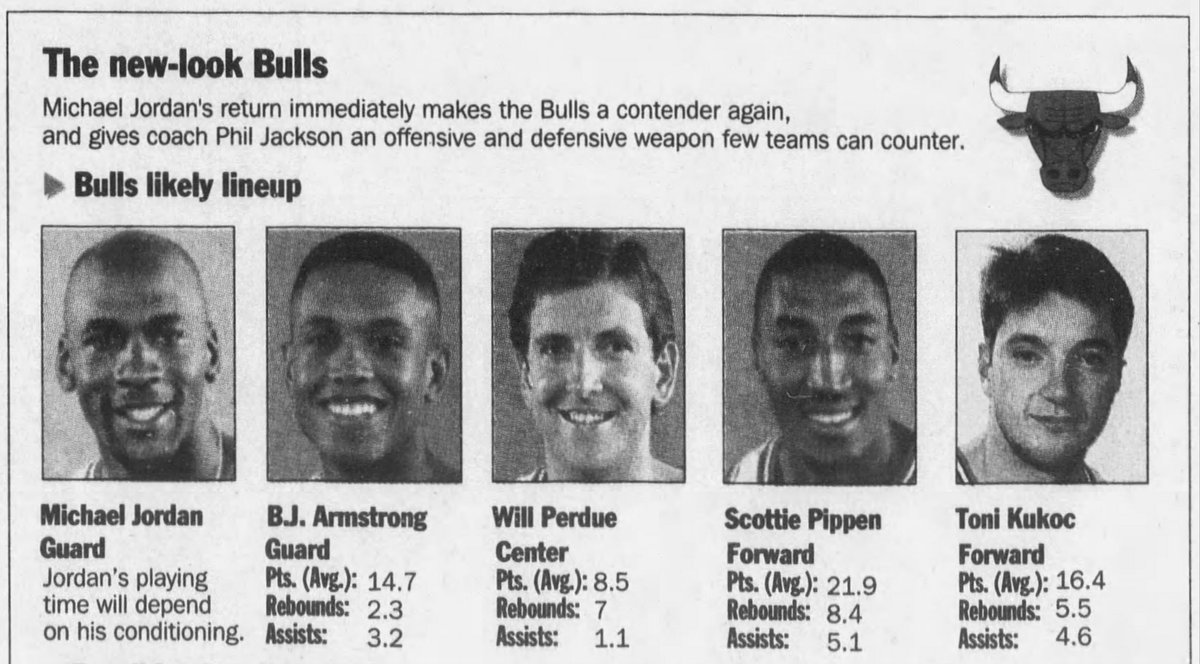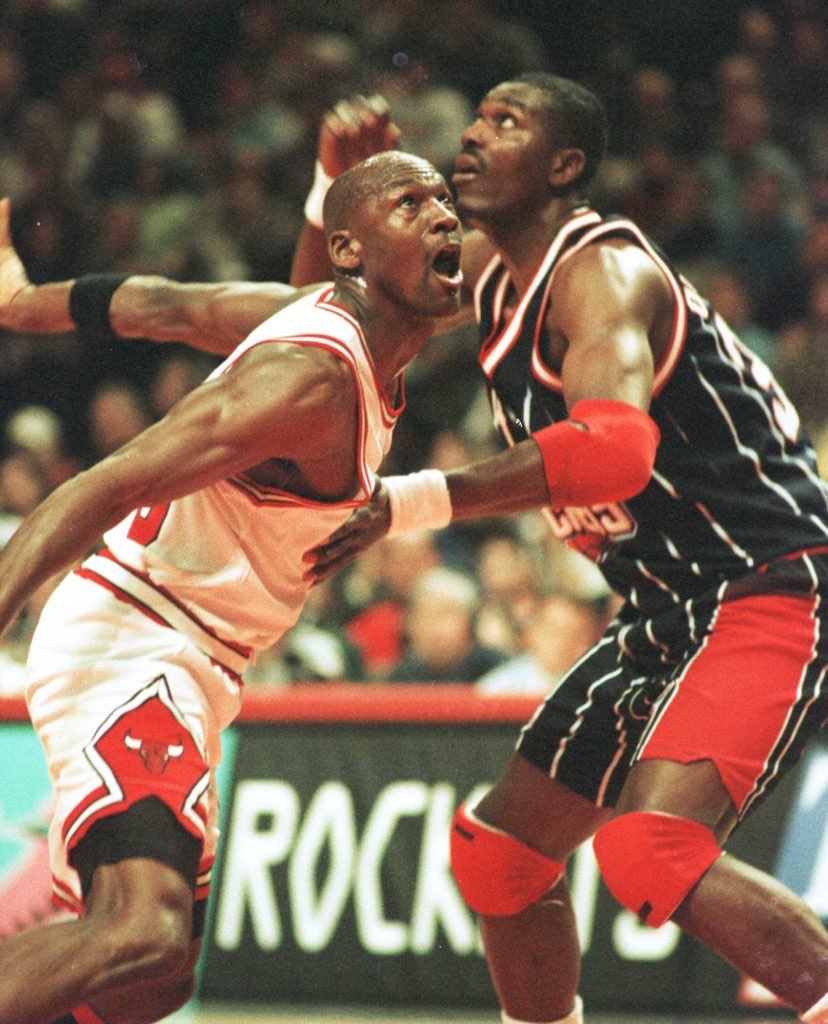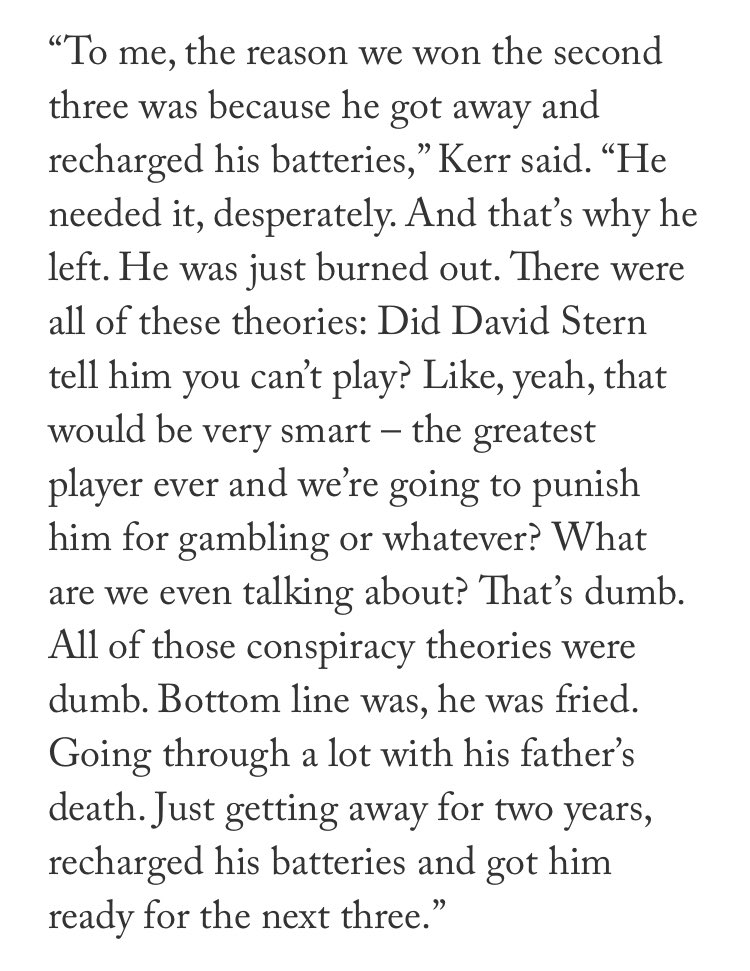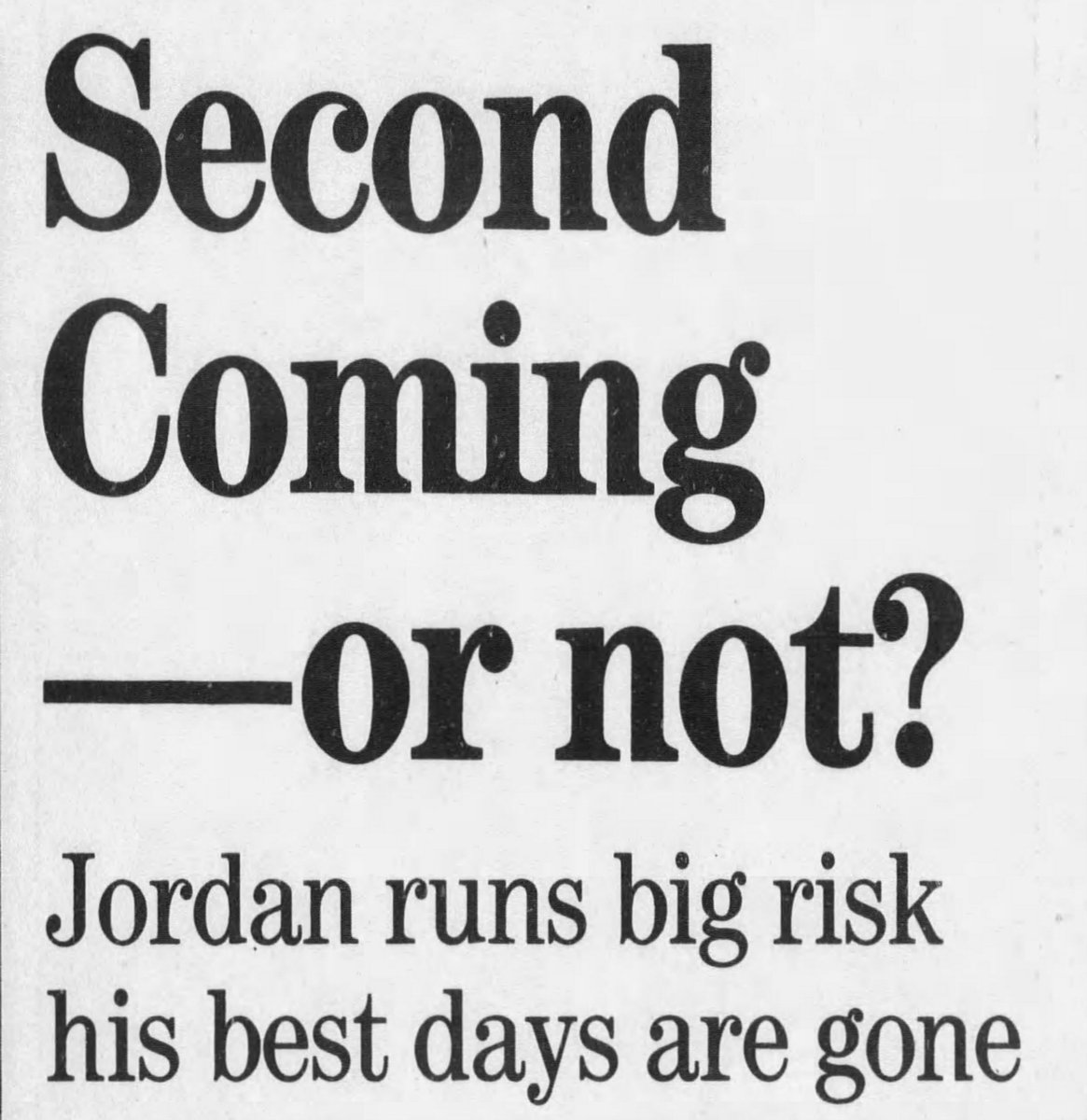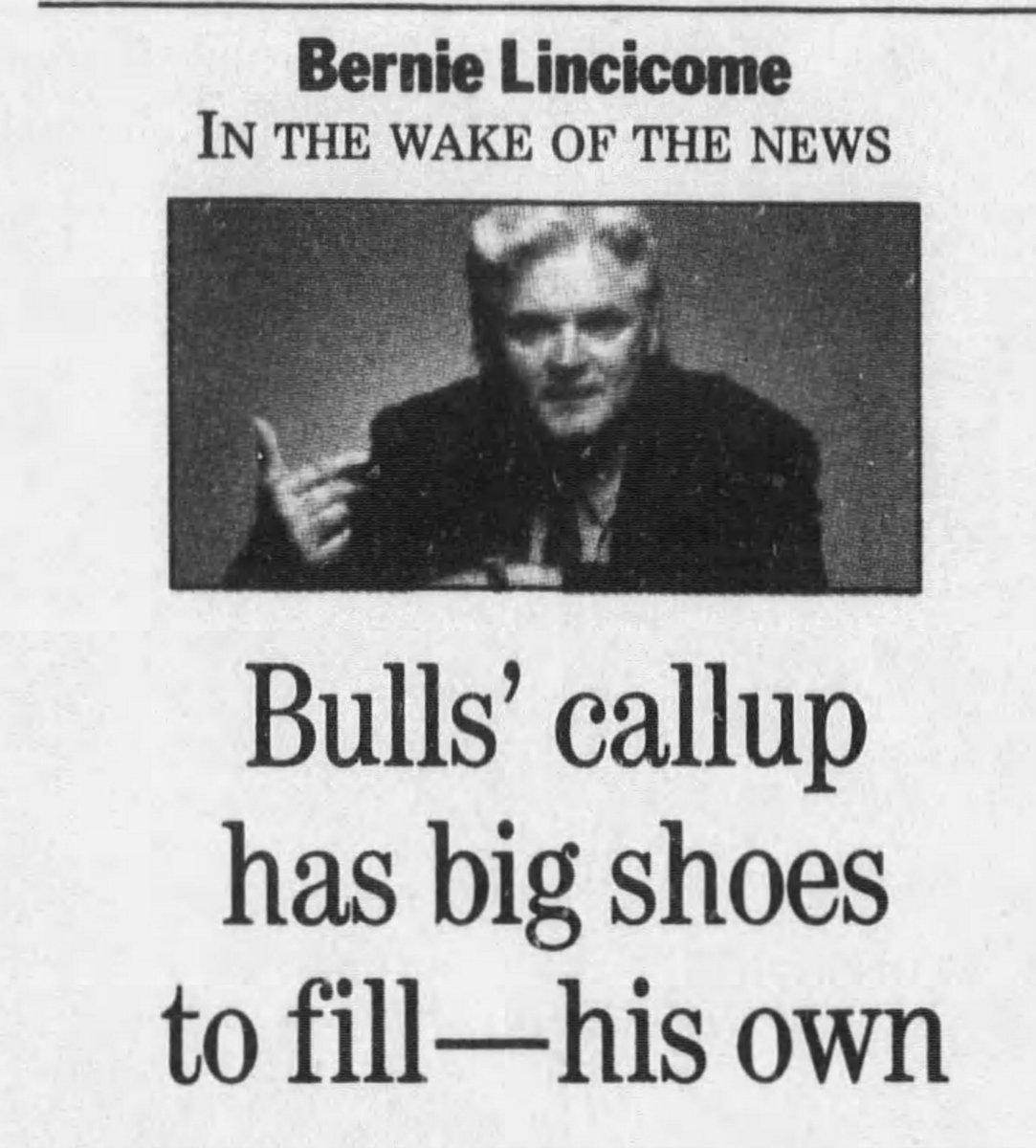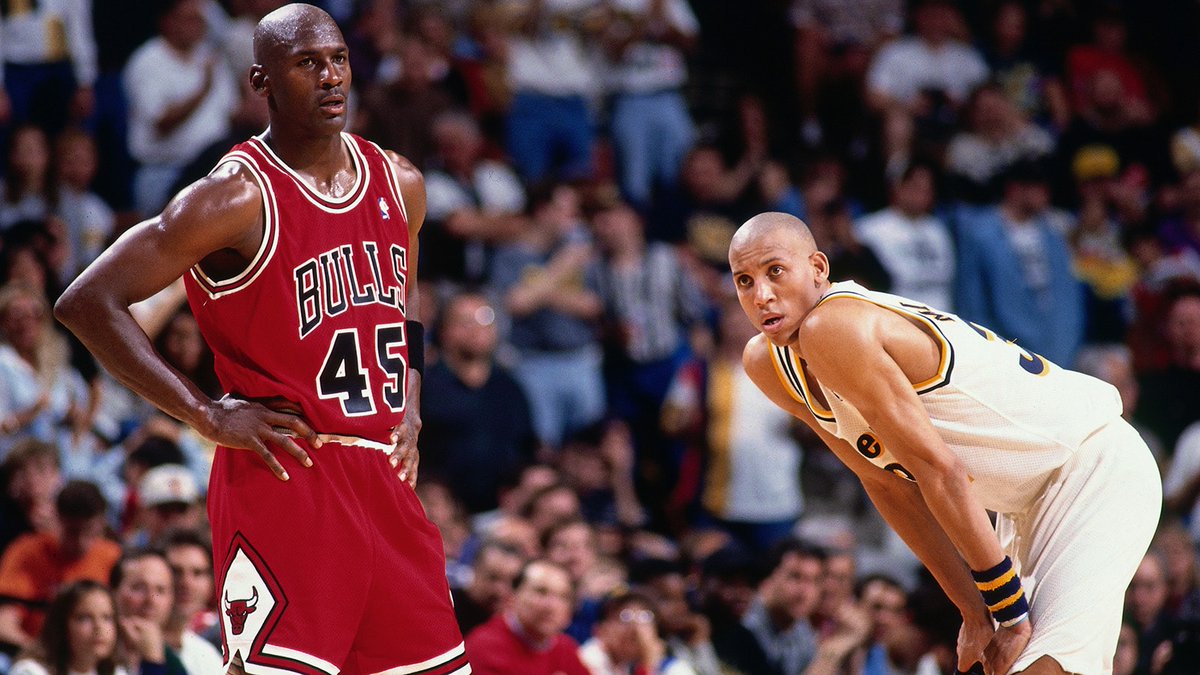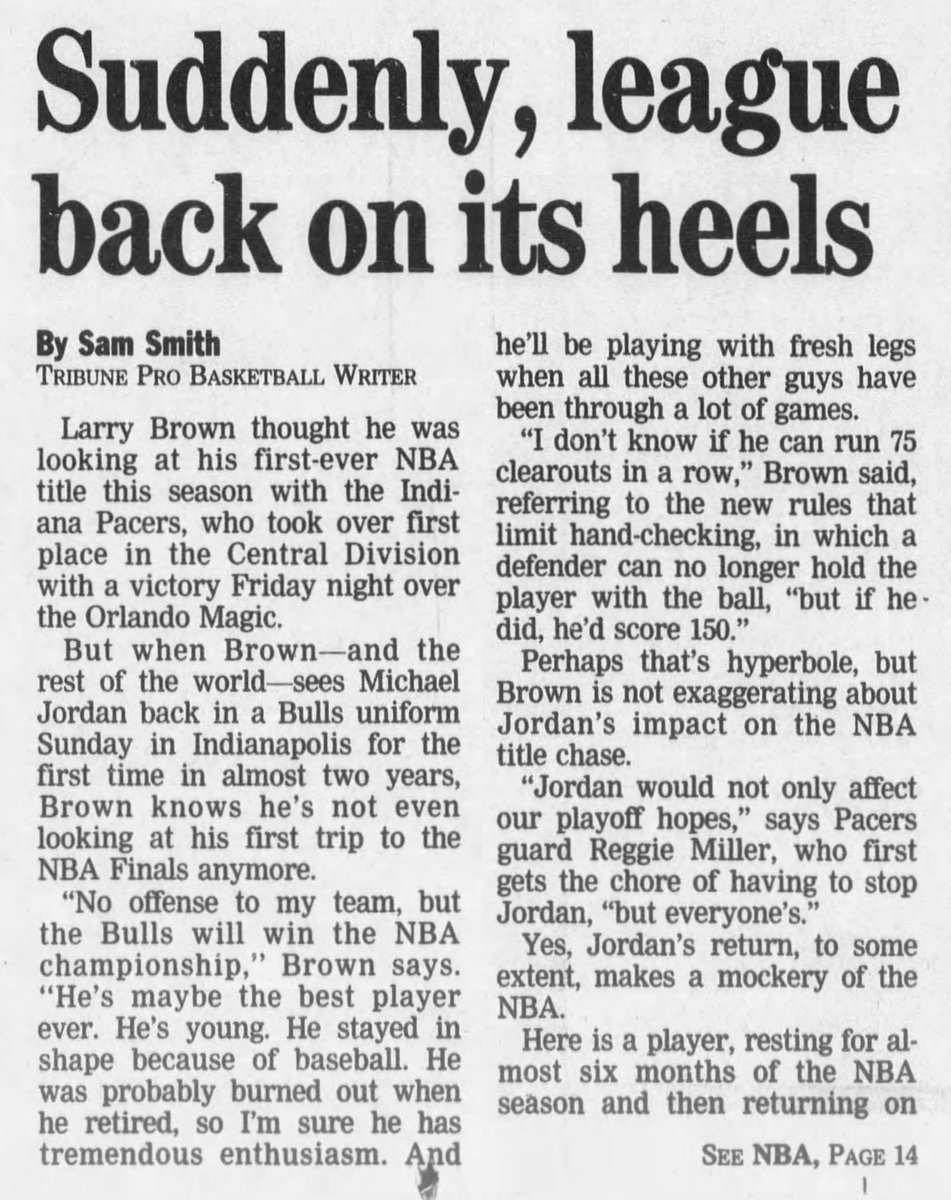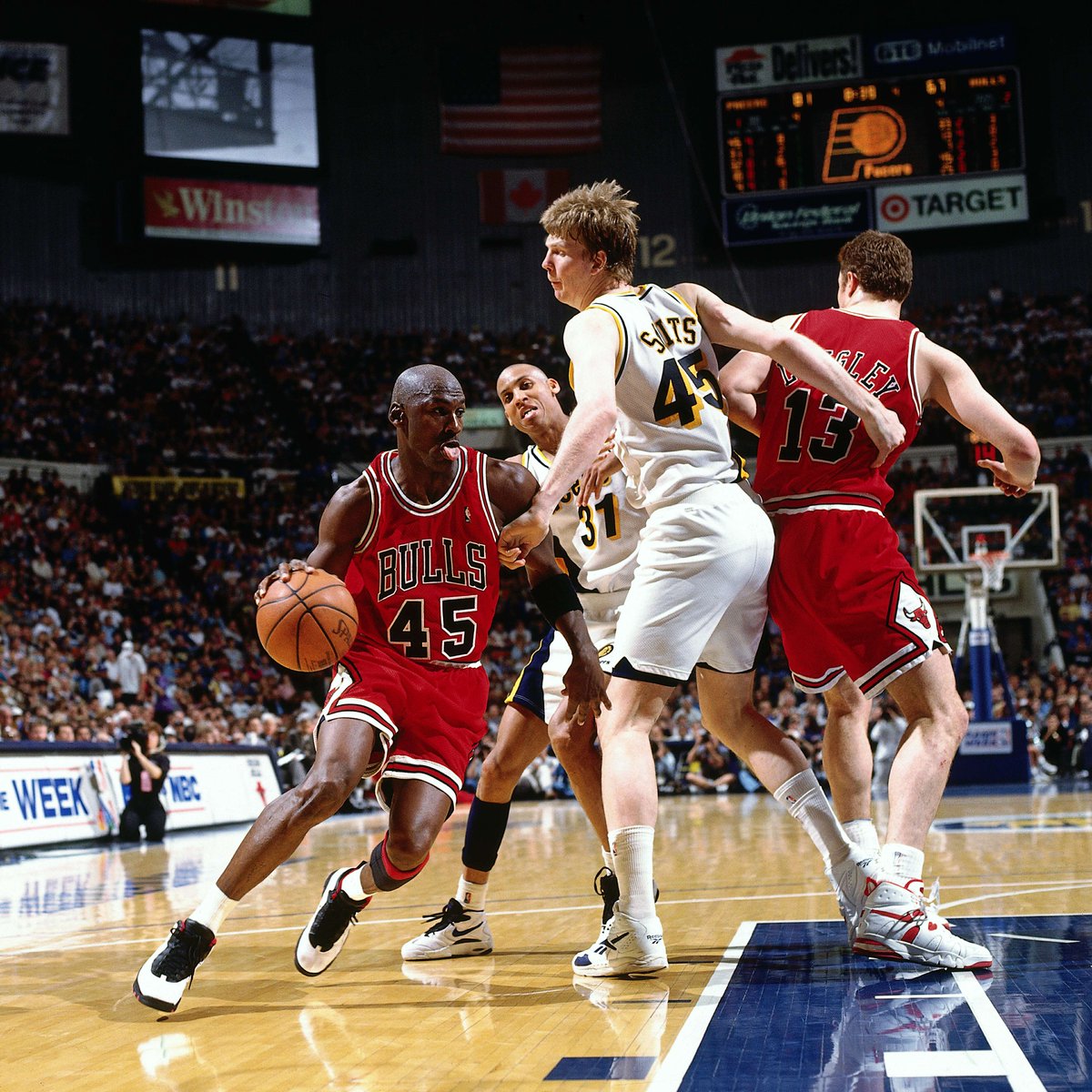He hadn’t played competitive baseball in years, yet at age 31, Michael Jordan hit .202 and .252 in the minors.
In honor of the 25-year anniversary of his star turn at Wrigley, this is the true story of how MJ nearly turned himself into a professional baseball player.
A thread.
In honor of the 25-year anniversary of his star turn at Wrigley, this is the true story of how MJ nearly turned himself into a professional baseball player.
A thread.
Followers of my work know how much I dig MJ& #39;s baseball career. I consider it to be one of his most impressive, underappreciated feats in his athletic career. https://twitter.com/readjack/status/1097242549020954625">https://twitter.com/readjack/...
One of the highlights came 25 years ago today, on April 7, 1994, when MJ played in the Crosstown Classic at Wrigley Field. It was the beginning of an unexpected journey as MJ transformed himself into a ballplayer.
Jordan’s time in baseball began as a standout little leaguer in North Carolina, and continued as he and his father talked in his early NBA days about the possibility of a two-sport career. He continued to build a relationship with the game, like taking BP at Comiskey in 1990.
The connection between Jordan and baseball was eased by Jerry Reinsdorf, owner of Jordan& #39;s Bulls and the nearby White Sox. Here in late 1990, Jordan participated in a TV promo for the 1991 White Sox season, the first season at New Comiskey.
In 1992, Jordan played what was probably his first game of 16-inch softball, a charity game at Thillens Park. @BobSirott recalls MJ’s enthusiasm for the game in this 2014 WGN story: “This is fun.”
https://wgnradio.com/2014/07/16/chicagos-love-of-16-inch-softball/">https://wgnradio.com/2014/07/1...
https://wgnradio.com/2014/07/16/chicagos-love-of-16-inch-softball/">https://wgnradio.com/2014/07/1...
As the early 90s wore on, baseball chased golf as Jordan’s favorite non-hoops sport. On July 25, 1993, he co-hosted a 12-inch softball game at Comiskey prior to a Sox game. His team lost to Michael Bolton’s 7-1; he finished 1 for 3 with a single and a run scored.
For a great history on this charity game, see @Howsito& #39;s thread: https://twitter.com/Howsito/status/918286428051611649">https://twitter.com/Howsito/s...
This was the point that everything changed for Jordan. His father was supposed to be in Chicago after a trip to North Carolina, but had been allegedly murdered two days prior in NC and hence was not on the plane back to Chicago the family expected him to be on.
The conspiracy theories came quickly, with pundits tying James Jordan’s murder to MJ’s gambling. These and other pressures hung over Jordan in August and September of 1993.
He was scheduled to play in a celebrity game at Thillens on Saturday, Sept. 11, but reporting of the day suggests he did not show. This was the same time that David Stern was telling reporters that a Jordan probe would end before the season.
These two clips are a day apart:
These two clips are a day apart:
On October 5, 1993, Jordan was back at Comiskey, where he threw out the first pitch before the ALCS. That night, word spread at the park: MJ was retiring.
Again, this led to conspiracy theories, in part because people couldn’t believe that MJ would retire at the top of his game. But he’d talked about it for years, at least as far back as 1986, when he said on Letterman that he planned to retire at age 32 and join the PGA Tour.
As documented in books by Sam Smith and Melissa Isaacson, Jordan told teammates throughout 1993 that he was considering retirement at the end of the season.
https://readjack.wordpress.com/2016/05/19/there-could-never-be-an-8-peat-no-jordan-suspension-why-michael-jordan-needed-baseball/">https://readjack.wordpress.com/2016/05/1...
https://readjack.wordpress.com/2016/05/19/there-could-never-be-an-8-peat-no-jordan-suspension-why-michael-jordan-needed-baseball/">https://readjack.wordpress.com/2016/05/1...
Jordan also talked baseball in his 1993 book “Rare Air,” published five days before his retirement. All of this while the NBA was attempting to meet with him to discuss his newest gambling accusations, and pundits speculated that a suspension could be in the works.
@dyroljoyner:
@dyroljoyner:
In other words, from 1986 to 1993, the signs of a possible early retirement for Michael Jordan, along with his love of baseball, were evident for anyone paying attention.
Still, the retirement was a stunning turn. Two months later, MJ started showing up at Comiskey for early morning batting practice sessions. Both MJ and Reinsdorf played it off, though Reinsdorf acknowledged that if Jordan wanted to try baseball, he wouldn’t tell him no.
A month later, things got weird. Seemingly trolling the conspiracy theorists, Nike released a new Jordan campaign about theories that MJ “faked his retirement” from the NBA in order to play minor league basketball under several guises, including “Johnny Kilroy.”
If MJ really was actually secretly suspended for gambling, the Kilroy commercials were the most ballsy, reckless move Jordan could make. Everyone seemed to be in on the joke, including Phil Jackson and a legion of NBA superstars.
Throughout January, the rumors that Jordan would make a run at baseball persisted and intensified. He started getting serious in the cages, taking 1,000 swings a day. In late January, he faced his first major league arm: White Sox GM and retired pitcher Ron Schueler.
Finally, on February 7, 1994, the rumors ended and the impossible happened: Michael Jordan signed a minor league contract with the White Sox. The contract would max out at $109k if he made the majors; throughout his retirement, though, the Bulls still paid him his NBA salary.
The Sox players, fresh off a division championship, welcomed Jordan to varying degrees. Frank Thomas was among the most supportive. Here they are in a snippet from late February, when MJ hit his first batting practice home run.
On March 30, the White Sox assigned Jordan to AA Birmingham to play with the Barons. He would report to them April 8, missing the opener for the Crosstown Classic. He finished spring hitting .149 with 7 hits, 4 RBI and 0 HR. “I think I’m improving,” he said after the assignment.
Though he spent most of his baseball career in minor league jerseys, Jordan’s famous White Sox 45 jersey was on memorable display April 7, 1994, 25 years ago today, when he played for the Sox against the Cubs at Wrigley Field for the 1994 Crosstown Classic.
Jordan hit sixth and played right field that day. Frank Thomas hit third. This was one of the many bizarre cross-over feelings that day, with the 3x NBA MVP sharing a batting order with the reigning AL MVP.
Another moment where iconography merged was Michael Jordan& #39;s pre-game interview with Harry Caray.
As for the game, MJ did what he always does: came up big. He collected a single and a double, drove in two runs, and scored once.
Part 1 of this thread on Michael Jordan& #39;s baseball career is brought to you by my Chicago sports IG!
https://instagram.com/ashotonehlo/
My">https://instagram.com/ashotoneh... free Bulls book is pretty good too :)
https://readjack.files.wordpress.com/2016/05/how-the-goat-was-built-by-jack-m-silverstein2.pdf">https://readjack.files.wordpress.com/2016/05/h...
https://instagram.com/ashotonehlo/
My">https://instagram.com/ashotoneh... free Bulls book is pretty good too :)
https://readjack.files.wordpress.com/2016/05/how-the-goat-was-built-by-jack-m-silverstein2.pdf">https://readjack.files.wordpress.com/2016/05/h...
Come back tonight for Part 2, where I& #39;ll show just how impressive Michael Jordan& #39;s baseball career was, including his 13-game hitting streak, his superstar slump-busting August, his powerful run in the Arizona Fall League and his promotion to triple-A Nashville. More to come :)
For those interested, the books I cite by @SamSmithHoops & @mkisaacson are...
SMITH:
"The Jordan Rules" — https://www.amazon.com/Jordan-Rules-Sam-Smith/dp/0671744917/ref=sr_1_1?keywords=the+jordan+rules&qid=1554647822&s=books&sr=1-1
"Second">https://www.amazon.com/Jordan-Ru... Coming" — https://www.amazon.com/gp/product/0606109250/ref=dbs_a_def_rwt_hsch_vapi_taft_p1_i1
"There">https://www.amazon.com/gp/produc... Is No Text" — https://www.amazon.com/There-No-Next-Legends-Michael/dp/1626815100/ref=sr_1_1?crid=16UXE0HYCU59L&keywords=there+is+no+next&qid=1554648008&s=books&sprefix=there+is+no+next%2Cdigital-text%2C147&sr=1-1
ISAACSON:
"Transition">https://www.amazon.com/There-No-... Game" — https://www.amazon.com/Transition-Game-Inside-Chicago-Bulls/dp/157167005X/ref=sr_1_8?keywords=transition+game&qid=1554648032&s=books&sr=1-8">https://www.amazon.com/Transitio...
SMITH:
"The Jordan Rules" — https://www.amazon.com/Jordan-Rules-Sam-Smith/dp/0671744917/ref=sr_1_1?keywords=the+jordan+rules&qid=1554647822&s=books&sr=1-1
"Second">https://www.amazon.com/Jordan-Ru... Coming" — https://www.amazon.com/gp/product/0606109250/ref=dbs_a_def_rwt_hsch_vapi_taft_p1_i1
"There">https://www.amazon.com/gp/produc... Is No Text" — https://www.amazon.com/There-No-Next-Legends-Michael/dp/1626815100/ref=sr_1_1?crid=16UXE0HYCU59L&keywords=there+is+no+next&qid=1554648008&s=books&sprefix=there+is+no+next%2Cdigital-text%2C147&sr=1-1
ISAACSON:
"Transition">https://www.amazon.com/There-No-... Game" — https://www.amazon.com/Transition-Game-Inside-Chicago-Bulls/dp/157167005X/ref=sr_1_8?keywords=transition+game&qid=1554648032&s=books&sr=1-8">https://www.amazon.com/Transitio...
Getting started soon on Part 2, but I need to make a correction. The Cubs and Sox tied in the & #39;94 Crosstown Classic 4-4, not 3-3.
Onward!
https://twitter.com/readjack/status/1114823206727233537">https://twitter.com/readjack/...
Onward!
https://twitter.com/readjack/status/1114823206727233537">https://twitter.com/readjack/...
In honor of today’s 25-year anniversary of Michael Jordan playing with the White Sox at Wrigley, I looked at everything that led up to that magical game. Now, I’ll break down the 11 months over which MJ transformed himself into a baseball player. https://twitter.com/readjack/status/1114810898621837312">https://twitter.com/readjack/...
As I noted, there were certainly hints over the years that Jordan might retire early, along with hints that he viewed baseball as more than just a hobby. Yet the turn from his retirement 10/6/93 to his Sox contract 2/7/94 was stunning nonetheless.
(video from @inallairness)
(video from @inallairness)
From a purely athletic standpoint, one question loomed over Michael Jordan’s entire baseball career more than any other:
How good could he actually be as a baseball player?
Everyone had an opinion. Even Ted Williams.
How good could he actually be as a baseball player?
Everyone had an opinion. Even Ted Williams.
Unfortunately, the national perspective of MJ’s baseball skills was driven largely by Sports Illustrated’s infamous “Bag it Michael!” cover. Yet S.I. ran that in mid-March during spring training, just a bit more than a month into Jordan& #39;s time in baseball.
Jordan hit only .149 in spring training, but his improvement throughout 1994 was steady and significant, making S.I.’s cover — already mean-spirited — seem downright wrong. (They even tried to make amends in & #39;98, to no avail, as MJ never gave the mag another interview.)
That said, in his first two months in the minors, Jordan saw quickly two things: his potential, and just how humbling the game could be.
After failing to get a hit his first two games, Jordan ripped off a 13-game hit streak from April 10 to April 26. He hit .378 during that stretch (17-45), drove in five runs and stole six bases. That was the good side.
Just as quickly, he slumped. Hitting .327 at the end of the streak, with a peak of .333, Jordan’s average plummeted under .200 by the first week of June.
Jordan acknowledged deep doubts during this period. But he ultimately pushed through, I think in part because of what is ingeniously alluded to in this “Johnny Kilroy” commercial: that he just wanted to play a game away from the NBA grind.
Never was that dichotomy more stark than May 18, 1994. Jordan went 0-4 with two strikeouts, but was smiling. His former Bulls teammates, meanwhile, dropped one of the most infamous games in Bulls history: the Hubert Davis - Hue Hollins - Scottie Pippen game.
Jordan& #39;s troubles continued through the end of July. He was hitting .186, had driven in 37 runs, had zero home runs, and struck out 2.26 times for every walk. That all changed July 30, when he hit his first home run.
Jordan& #39;s first home run came the day before what would have been his father’s 58th birthday. https://twitter.com/readjack/status/1115120208753115141">https://twitter.com/readjack/...
Whether the home run triggered something in MJ or was the sign of the turnaround, everything changed. After hitting .150 in May, .188 in June and .148 in July, Jordan hit .276 in August.
“This is like the fourth quarter for me,” he said. “This is when I want to be my best.”
“This is like the fourth quarter for me,” he said. “This is when I want to be my best.”
From July 30 through the end of the season, Jordan hit .267 with three home runs. He improved his SO to BB ratio just a bit, increased his RBI per at-bats, and dragged his average back above the Mendoza Line, finishing the year at .202.
The drought was over. From @SamSmithHoops:
The drought was over. From @SamSmithHoops:
So again, when people look at MJ’s baseball career and blurt out “He was terrible! He hit .202!” they obscure two facts:
1. The inherent difficulty of hitting .202 at his age and experience.
2. The late-season burst that brought his average back to that point to begin with.
1. The inherent difficulty of hitting .202 at his age and experience.
2. The late-season burst that brought his average back to that point to begin with.
A month after his time with the Barons ended, Jordan went to the Arizona Fall League and the Scottsdale Scorpions. This is a league that his Barons manager Terry Francona called “probably a notch above Class Double A.”
In Arizona the competition was better and so was MJ. Among his teammates was Nomar Garciaparra, who made his double-A debut in 1995 and hit the same .267 as MJ’s finish of his AA campaign. Granted, these are different sample sizes, but it’s a fair reminder of MJ’s improvement.
Jordan finished his time in Scottsdale hitting .252 (31 of 123), again improving his SO-BB ratio, scoring more runs per at-bat and reducing his fielding errors.
Good writeup here of his Scorpions time: https://miscbaseball.wordpress.com/2013/05/08/michael-jordan-in-the-arizona-fall-league-in-1994/">https://miscbaseball.wordpress.com/2013/05/0...
Good writeup here of his Scorpions time: https://miscbaseball.wordpress.com/2013/05/08/michael-jordan-in-the-arizona-fall-league-in-1994/">https://miscbaseball.wordpress.com/2013/05/0...
At this point, opinion on his prospects as a future major leaguer remained low for the most part. Some predicted that any future rise in the sport for Jordan would be the result of a publicity stunt by the White Sox, with the sport hurting due to the ongoing strike.
Jordan and Francona remained more positive, if pragmatic and tempered. Jordan himself was honest about his shortcomings (“thinking too much”) but added upper-body weight — one source said 20 pounds — and maintained his determination.
From Dec. of ‘94 to Feb. of ‘95, the odds were good that Jordan would start the 1995 season with the triple-A Nashville Sounds. Jordan bet on himself, joining a golf club in early February, while Sox GM Schueler said MJ would have to “fall on his face” to go back to Birmingham.
In February of 1995, the Sox officially promoted Jordan to the triple-A Nashville Sounds. Schueler noted that if Jordan showed similar improvement in ‘95 as he did ‘94, the team would look hard at bringing him to the majors.
There was only one problem: the strike.
There was only one problem: the strike.
The MLB strike that had canceled the 1994 World Series was still raging as the ‘95 season approached. A number of minor league players were concerned about being squeezed to become replacement players — Jordan in particular.
A showdown was shaping up: the owners and management on one side, the major leaguers on the other, with the minor leaguers as the pawn. As everyone, especially Reinsdorf and Schueler, should have known, Michael Jordan was nobody’s pawn.
On March 2, 1995, the tension snapped. Jordan was among 30 minor leaguers who refused to play in spring games as replacement players. They were banished to a lesser locker room. Jordan left camp.
The Bulls, meanwhile, were 28-30, sixth in the East.
The Bulls, meanwhile, were 28-30, sixth in the East.
Remember, MJ leaving baseball took place less than a month after the Bulls tried and failed to trade Scottie Pippen to the Clippers.
Now, suddenly, their reunion seemed plausible. https://twitter.com/readjack/status/1084656910358536192">https://twitter.com/readjack/...
Now, suddenly, their reunion seemed plausible. https://twitter.com/readjack/status/1084656910358536192">https://twitter.com/readjack/...
Very quickly, MJ began working out with the Bulls. The city, and the basketball world at large, was in a stir. It looked as if MJ would finally be back on the court.
MJ& #39;s moves caught everyone so much by surprise that Nike had to quickly put the kibosh on a new Spike Lee commercial, the first Nike did promoting MJ as a baseball player.
Per screen graphics, this was shot in late November 1994, but it appears to have aired in March & #39;95.
Per screen graphics, this was shot in late November 1994, but it appears to have aired in March & #39;95.
With MJ now seemingly unemployed and practicing with the Bulls, the hype was through the roof. Kudos to @Crayestout for cutting through the noise and breaking the return story: https://twitter.com/readjack/status/1107508573460942848">https://twitter.com/readjack/...
On March 18, Jordan wrote the fax-heard-round-the-world: “I’m Back.” He started for the Bulls the next day. The rest is history. https://twitter.com/readjack/status/975434728940670976">https://twitter.com/readjack/...
Jordan& #39;s return to the Bulls kicked off an amazing ironman stretch, as he played in 357 of 358 possible games from his baseball return to his last shot.
The White Sox, meanwhile, won 86 games in 1996, their best season during MJ& #39;s 2nd Bulls stint. https://twitter.com/readjack/status/1097245139016343552">https://twitter.com/readjack/...
The White Sox, meanwhile, won 86 games in 1996, their best season during MJ& #39;s 2nd Bulls stint. https://twitter.com/readjack/status/1097245139016343552">https://twitter.com/readjack/...
And in the 24 years since he left baseball, Mike hasn& #39;t given up the love of the game. Here he is in the late 2000s legging out a triple in a softball game, complete with a cigar.
Never change, https://abs.twimg.com/emoji/v2/... draggable="false" alt="🐐" title="Goat" aria-label="Emoji: Goat">. Never change.
https://abs.twimg.com/emoji/v2/... draggable="false" alt="🐐" title="Goat" aria-label="Emoji: Goat">. Never change.
(Credit: https://www.youtube.com/watch?v=mJdwC26LbOw)">https://www.youtube.com/watch...
Never change,
(Credit: https://www.youtube.com/watch?v=mJdwC26LbOw)">https://www.youtube.com/watch...
That& #39;s all folks! Just remember: MJ turned himself into a baseball player. He wasn& #39;t perfect, and he wasn& #39;t finished. But as Spike Lee reminded us, he was trying.
Enjoy my & #39;96 Bulls book and Chicago sports history IG below. s/o to @_newspapers & YouTube. https://twitter.com/readjack/status/1114823666850783233">https://twitter.com/readjack/...
Enjoy my & #39;96 Bulls book and Chicago sports history IG below. s/o to @_newspapers & YouTube. https://twitter.com/readjack/status/1114823666850783233">https://twitter.com/readjack/...
My biggest takeaway from this #MichaelJordan baseball thread? His steadily improving batting average.
1994 spring training: .149
1994 AA, Barons: .202
1994 Arizona Fall League, Scorpions: .252
Check out his AA progress:
May: .150
June: .188
July: .148
August: .276
Amazing.
1994 spring training: .149
1994 AA, Barons: .202
1994 Arizona Fall League, Scorpions: .252
Check out his AA progress:
May: .150
June: .188
July: .148
August: .276
Amazing.
Ohhhhhh snap here we go. Steve Wulf!
H/T @GeorgeYedinak for sending me this http://www.espn.com/mlb/story/_/id/26449232/the-true-story-michael-jordan-brief-promising-baseball-career">https://www.espn.com/mlb/story...
H/T @GeorgeYedinak for sending me this http://www.espn.com/mlb/story/_/id/26449232/the-true-story-michael-jordan-brief-promising-baseball-career">https://www.espn.com/mlb/story...
The work @inallairness does on his MJ podcast is INVALUABLE.
Interviews with players and journalists + deep-dive research.
Here he is with @Stehny doing a single, hourlong episode strictly on MJ’s comeback game, 3/19/95.
 https://abs.twimg.com/emoji/v2/... draggable="false" alt="🐐" title="Goat" aria-label="Emoji: Goat"> #episodeGuid=b3ba1c15731b4b88a3fa80a96565624f">https://podcasts.apple.com/us/podcast/nba-history-michael-jordan-era-more-in-all-airness/id568743612 #episodeGuid=b3ba1c15731b4b88a3fa80a96565624f">https://podcasts.apple.com/us/podcas...
https://abs.twimg.com/emoji/v2/... draggable="false" alt="🐐" title="Goat" aria-label="Emoji: Goat"> #episodeGuid=b3ba1c15731b4b88a3fa80a96565624f">https://podcasts.apple.com/us/podcast/nba-history-michael-jordan-era-more-in-all-airness/id568743612 #episodeGuid=b3ba1c15731b4b88a3fa80a96565624f">https://podcasts.apple.com/us/podcas...
Interviews with players and journalists + deep-dive research.
Here he is with @Stehny doing a single, hourlong episode strictly on MJ’s comeback game, 3/19/95.
What was @ScottiePippen doing while MJ was playing baseball?
Turning himself into an MVP, that& #39;s what.
Take a look at Scottie& #39;s remarkable, inspiring, history making and totally thrilling 1994 season.
A thread. https://twitter.com/readjack/status/1129774043438231557">https://twitter.com/readjack/...
Turning himself into an MVP, that& #39;s what.
Take a look at Scottie& #39;s remarkable, inspiring, history making and totally thrilling 1994 season.
A thread. https://twitter.com/readjack/status/1129774043438231557">https://twitter.com/readjack/...
On Feb. 1, 1995, Michael Jordan bought a $20,000 membership to a Nashville golf club as he prepared for baseball.
On Mar. 18, he was on the Bulls.
The 45 days that drove MJ back to the NBA.
My latest, at @NBCSChicago.
Thank you to @mikedyce https://abs.twimg.com/emoji/v2/... draggable="false" alt="👊" title="Fisted hand" aria-label="Emoji: Fisted hand"> https://www.nbcsports.com/chicago/bulls/michael-jordan-im-back-fax-1995-nba">https://www.nbcsports.com/chicago/b...
https://abs.twimg.com/emoji/v2/... draggable="false" alt="👊" title="Fisted hand" aria-label="Emoji: Fisted hand"> https://www.nbcsports.com/chicago/bulls/michael-jordan-im-back-fax-1995-nba">https://www.nbcsports.com/chicago/b...
On Mar. 18, he was on the Bulls.
The 45 days that drove MJ back to the NBA.
My latest, at @NBCSChicago.
Thank you to @mikedyce
I& #39;ve interviewed two members of the dynasty Bulls.
And now I& #39;ve been interviewed by one member of the dynasty Bulls.
@Will_Perdue32 and I chop it up about all things MJ& #39;s comeback, now at @NBCSChicago.
Thank you @thetonygill! https://www.youtube.com/watch?v=k3qrtvFjgWo">https://www.youtube.com/watch...
And now I& #39;ve been interviewed by one member of the dynasty Bulls.
@Will_Perdue32 and I chop it up about all things MJ& #39;s comeback, now at @NBCSChicago.
Thank you @thetonygill! https://www.youtube.com/watch?v=k3qrtvFjgWo">https://www.youtube.com/watch...
Awesome thread by @Crayestout about how she broke the story of MJ’s comeback.
This is a lesson for all journalists: https://twitter.com/crayestout/status/1240292780116717569?s=21">https://twitter.com/crayestou...
This is a lesson for all journalists: https://twitter.com/crayestout/status/1240292780116717569?s=21">https://twitter.com/crayestou...
Left: Michael Jordan announces his retirement from baseball, March 10, 1995 — 379 words
Right: Michael Jordan announces his return to basketball, March 18, 1995 — 2 words
https://nbcsports.com/chicago/bulls/michael-jordan-im-back-fax-1995-nba
https://nbcsports.com/chicago/b... href="https://twitter.com/NBCSChicago">@NBCSChicago @NBCSBulls @mikedyce @thetonygill
Right: Michael Jordan announces his return to basketball, March 18, 1995 — 2 words
https://nbcsports.com/chicago/bulls/michael-jordan-im-back-fax-1995-nba
Journalism is collaborative. Thank you to:
* @jadande
* David Climer (RIP)
* Bob Greene
* David Halberstam (RIP)
* @mkisaacson
* @Crayestout
* @inallairness
* Craig Sager (RIP)
* @LeeShappell
* @SamSmithHoops
* @PWSullivan
* @byPhilTaylor
* @WulfESPN https://www.nbcsports.com/chicago/bulls/michael-jordan-im-back-fax-1995-nba">https://www.nbcsports.com/chicago/b...
* @jadande
* David Climer (RIP)
* Bob Greene
* David Halberstam (RIP)
* @mkisaacson
* @Crayestout
* @inallairness
* Craig Sager (RIP)
* @LeeShappell
* @SamSmithHoops
* @PWSullivan
* @byPhilTaylor
* @WulfESPN https://www.nbcsports.com/chicago/bulls/michael-jordan-im-back-fax-1995-nba">https://www.nbcsports.com/chicago/b...
March 19, 1995: the new era begins.
The full story of how we went from under .500 to "I& #39;m back." Now at @NBCSChicago:
https://www.nbcsports.com/chicago/bulls/michael-jordan-im-back-fax-1995-nba">https://www.nbcsports.com/chicago/b...
The full story of how we went from under .500 to "I& #39;m back." Now at @NBCSChicago:
https://www.nbcsports.com/chicago/bulls/michael-jordan-im-back-fax-1995-nba">https://www.nbcsports.com/chicago/b...
These quotes from @SteveKerr & @TheJetOnTNT on why the Bulls would not have won 8-straight if MJ didn’t retire are on point.
Thank you @davidaldridgedc & @MrMichaelLee for the story.
https://theathletic.com/1684191/2020/03/19/im-back-25-years-later-michael-jordans-return-still-electrifies/
My">https://theathletic.com/1684191/2... take: https://readjack.wordpress.com/2016/05/19/there-could-never-be-an-8-peat-no-jordan-suspension-why-michael-jordan-needed-baseball/
“I’m">https://readjack.wordpress.com/2016/05/1... back”: https://www.nbcsports.com/chicago/bulls/michael-jordan-im-back-fax-1995-nba">https://www.nbcsports.com/chicago/b...
Thank you @davidaldridgedc & @MrMichaelLee for the story.
https://theathletic.com/1684191/2020/03/19/im-back-25-years-later-michael-jordans-return-still-electrifies/
My">https://theathletic.com/1684191/2... take: https://readjack.wordpress.com/2016/05/19/there-could-never-be-an-8-peat-no-jordan-suspension-why-michael-jordan-needed-baseball/
“I’m">https://readjack.wordpress.com/2016/05/1... back”: https://www.nbcsports.com/chicago/bulls/michael-jordan-im-back-fax-1995-nba">https://www.nbcsports.com/chicago/b...
If MJ doesn’t retire, I think we 4-peat and then lose to Orlando in ‘95. If we’re lucky, we lose to Houston in ‘95.
But MJ and Scottie needed time apart. Horace still leaves after ‘94. Maybe Scottie forces a trade after ‘95 and Krause obliges. https://twitter.com/readjack/status/1240818702343450625?s=21">https://twitter.com/readjack/...
But MJ and Scottie needed time apart. Horace still leaves after ‘94. Maybe Scottie forces a trade after ‘95 and Krause obliges. https://twitter.com/readjack/status/1240818702343450625?s=21">https://twitter.com/readjack/...
With no Scottie in ‘96, there’s no need to risk a move for Rodman. Orlando breaks thru and wins in ‘96. MJ and Phil are free agents. The Knicks throw them both huge offers. All bets are off.
That’s what my story is about. Nothing is certain. https://www.nbcsports.com/chicago/bulls/michael-jordan-im-back-fax-1995-nba">https://www.nbcsports.com/chicago/b...
That’s what my story is about. Nothing is certain. https://www.nbcsports.com/chicago/bulls/michael-jordan-im-back-fax-1995-nba">https://www.nbcsports.com/chicago/b...
One element lost in the MJ comeback retrospectives is how much uncertainty there was about whether Jordan would be JORDAN again. These were all headlines in the Tribune on March 19, 1995, the day of his first game back:
http://nbcsports.com/chicago/bulls/michael-jordan-im-back-fax-1995-nba">https://nbcsports.com/chicago/b...
http://nbcsports.com/chicago/bulls/michael-jordan-im-back-fax-1995-nba">https://nbcsports.com/chicago/b...
That said, I think people in the league had a better sense of how great Jordan would be after baseball. Larry Brown straight up threw his Pacers and everyone else under the bus:
"No offense to my team, but the Bulls will win the NBA championship."
http://nbcsports.com/chicago/bulls/michael-jordan-im-back-fax-1995-nba">https://nbcsports.com/chicago/b...
"No offense to my team, but the Bulls will win the NBA championship."
http://nbcsports.com/chicago/bulls/michael-jordan-im-back-fax-1995-nba">https://nbcsports.com/chicago/b...
Maybe it was MJ& #39;s 52 he dropped in Scottie& #39;s charity game in Sept. 1994. Maybe it was just a belief in him. Maybe it was common sense within basketball.
But people in the NBA were much more bullish on MJ post-baseball than the press, or even fans.
http://nbcsports.com/chicago/bulls/michael-jordan-im-back-fax-1995-nba">https://nbcsports.com/chicago/b...
But people in the NBA were much more bullish on MJ post-baseball than the press, or even fans.
http://nbcsports.com/chicago/bulls/michael-jordan-im-back-fax-1995-nba">https://nbcsports.com/chicago/b...
"He& #39;s no Ken Griffey."
"But he& #39;s trying."
It& #39;s crazy how quickly they had to scrap this gem.
https://readjack.substack.com/archive ">https://readjack.substack.com/archive&q... https://twitter.com/readjack/status/1115125714720829441">https://twitter.com/readjack/...
"But he& #39;s trying."
It& #39;s crazy how quickly they had to scrap this gem.
https://readjack.substack.com/archive ">https://readjack.substack.com/archive&q... https://twitter.com/readjack/status/1115125714720829441">https://twitter.com/readjack/...

 Read on Twitter
Read on Twitter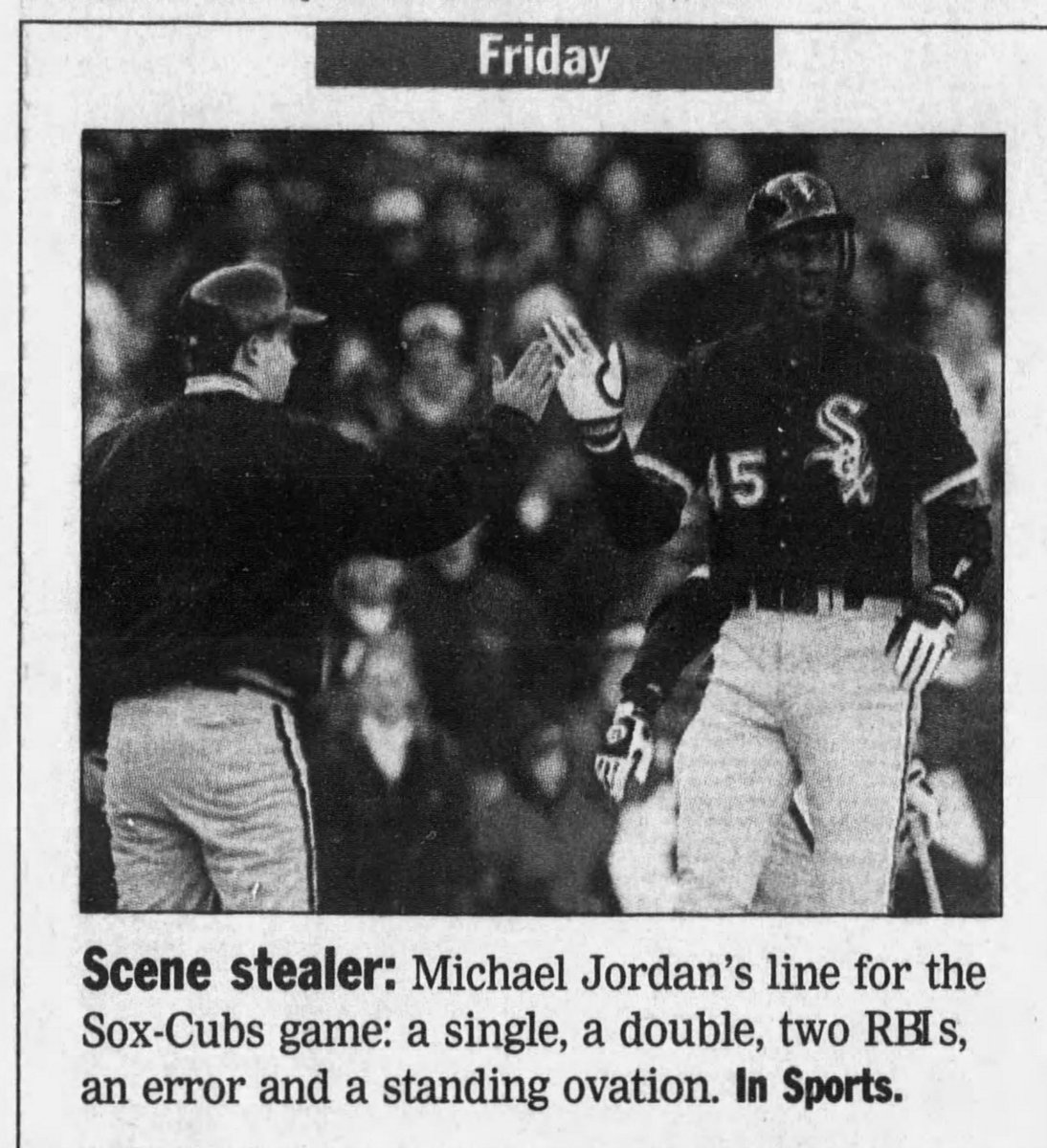
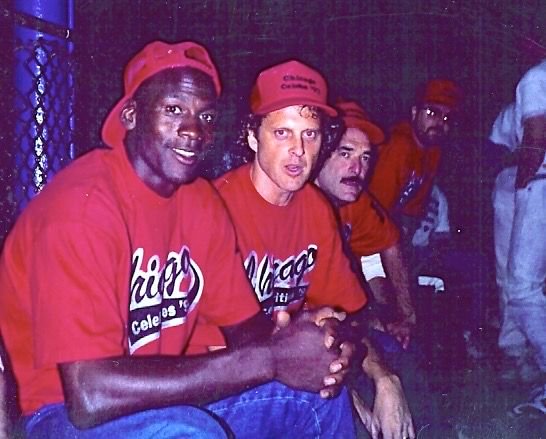

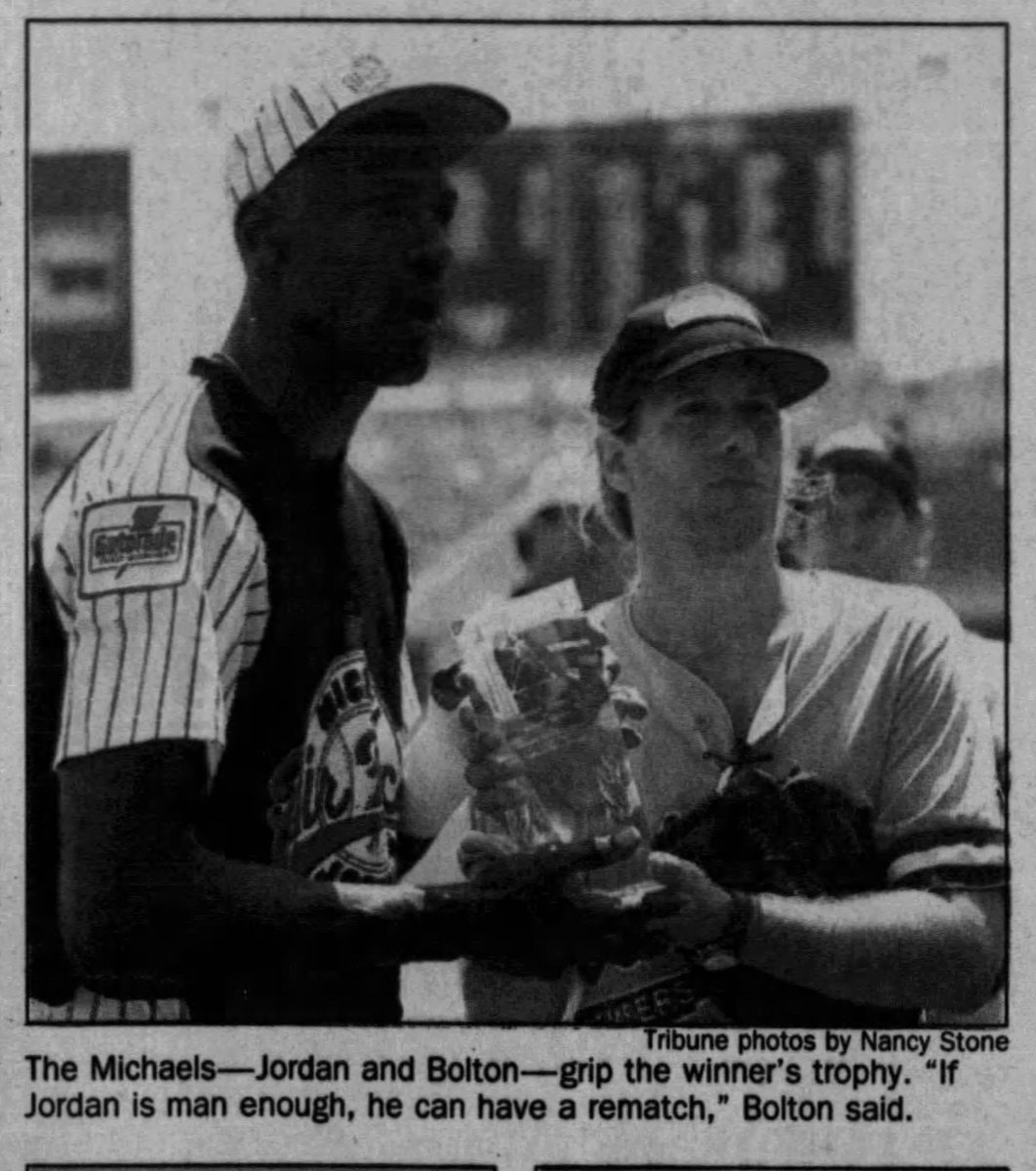
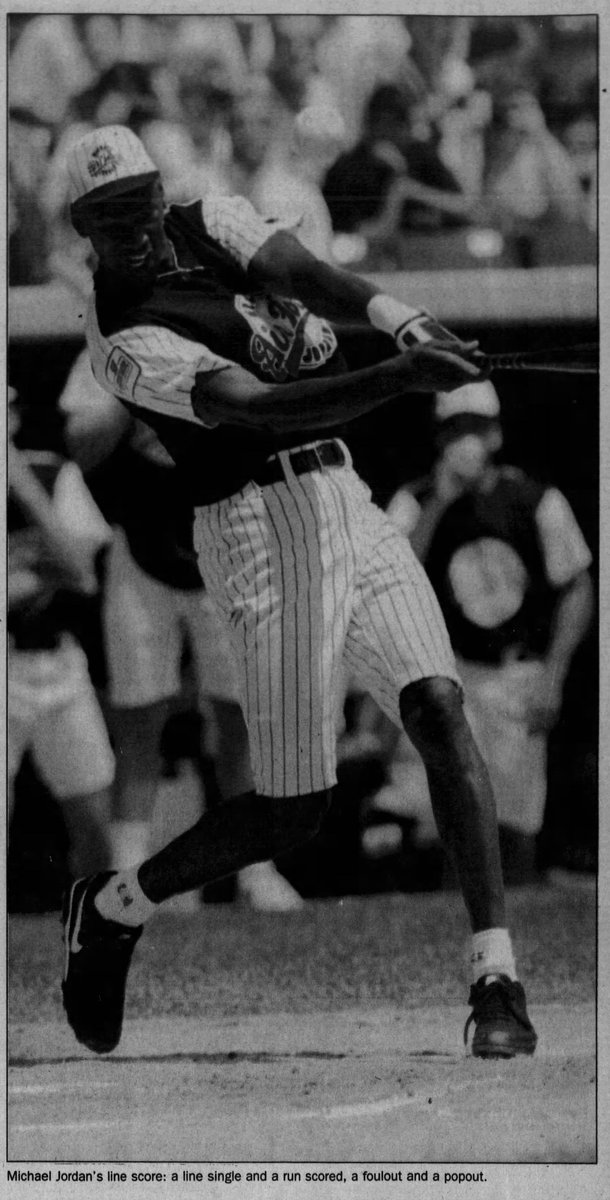
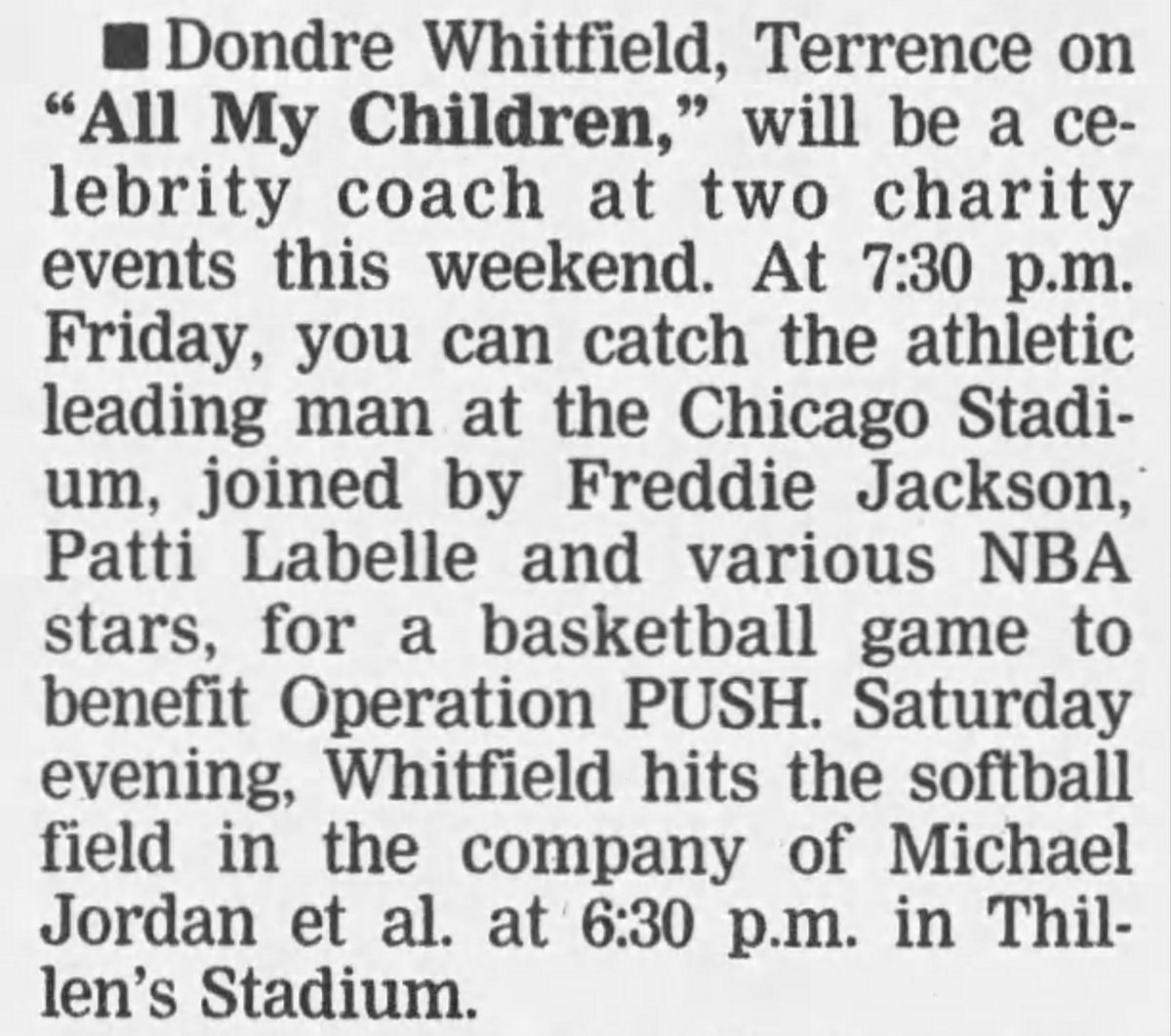
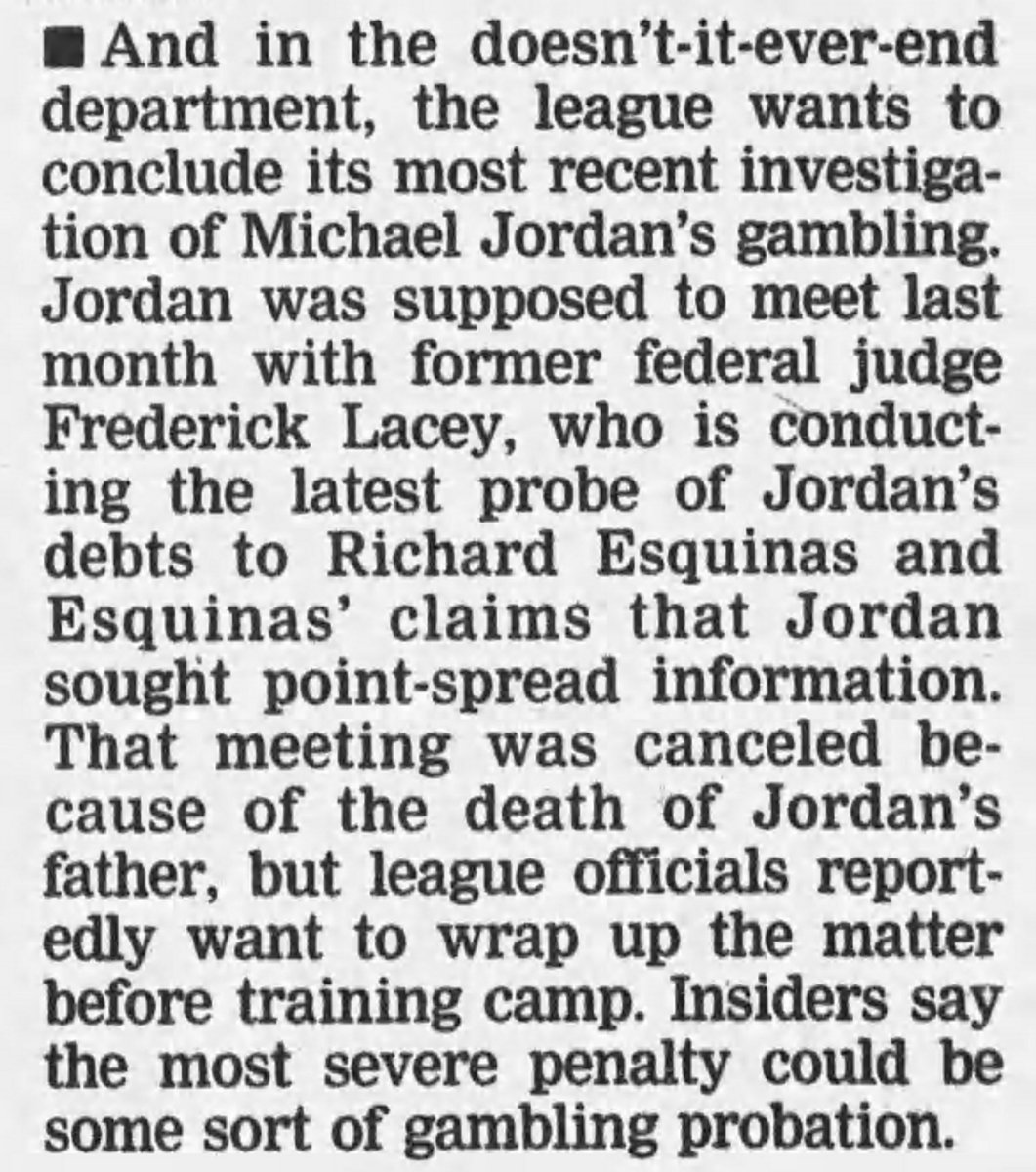
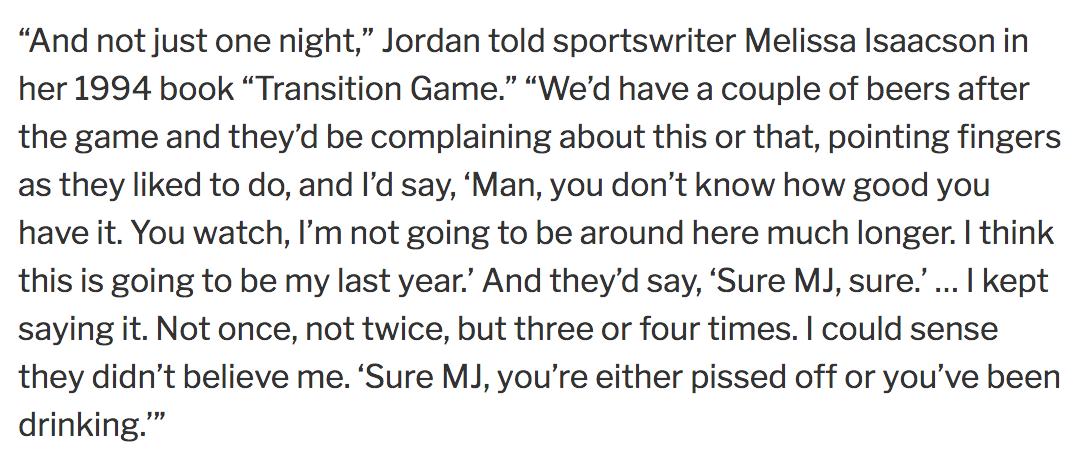
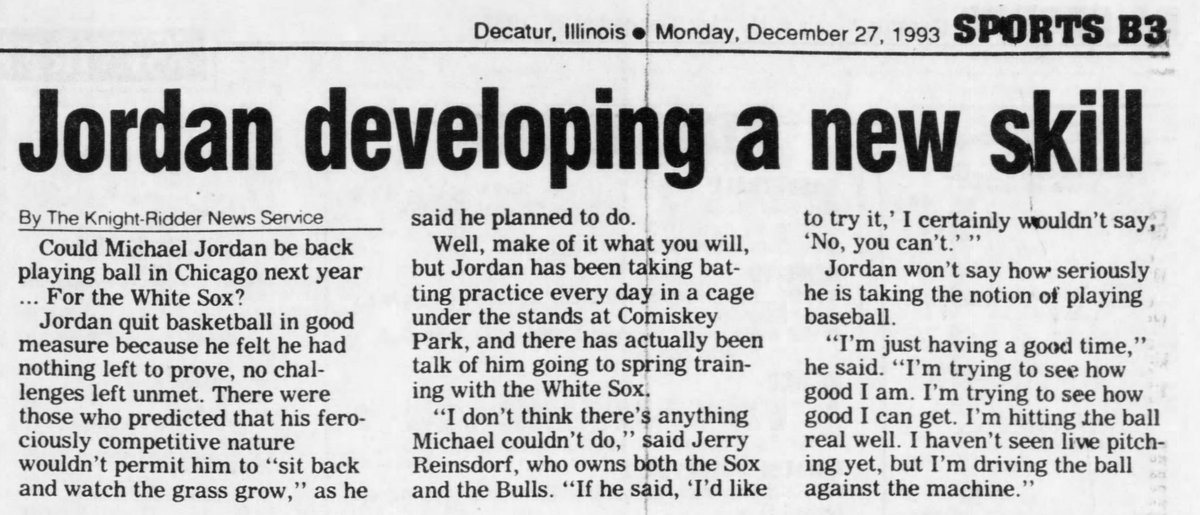
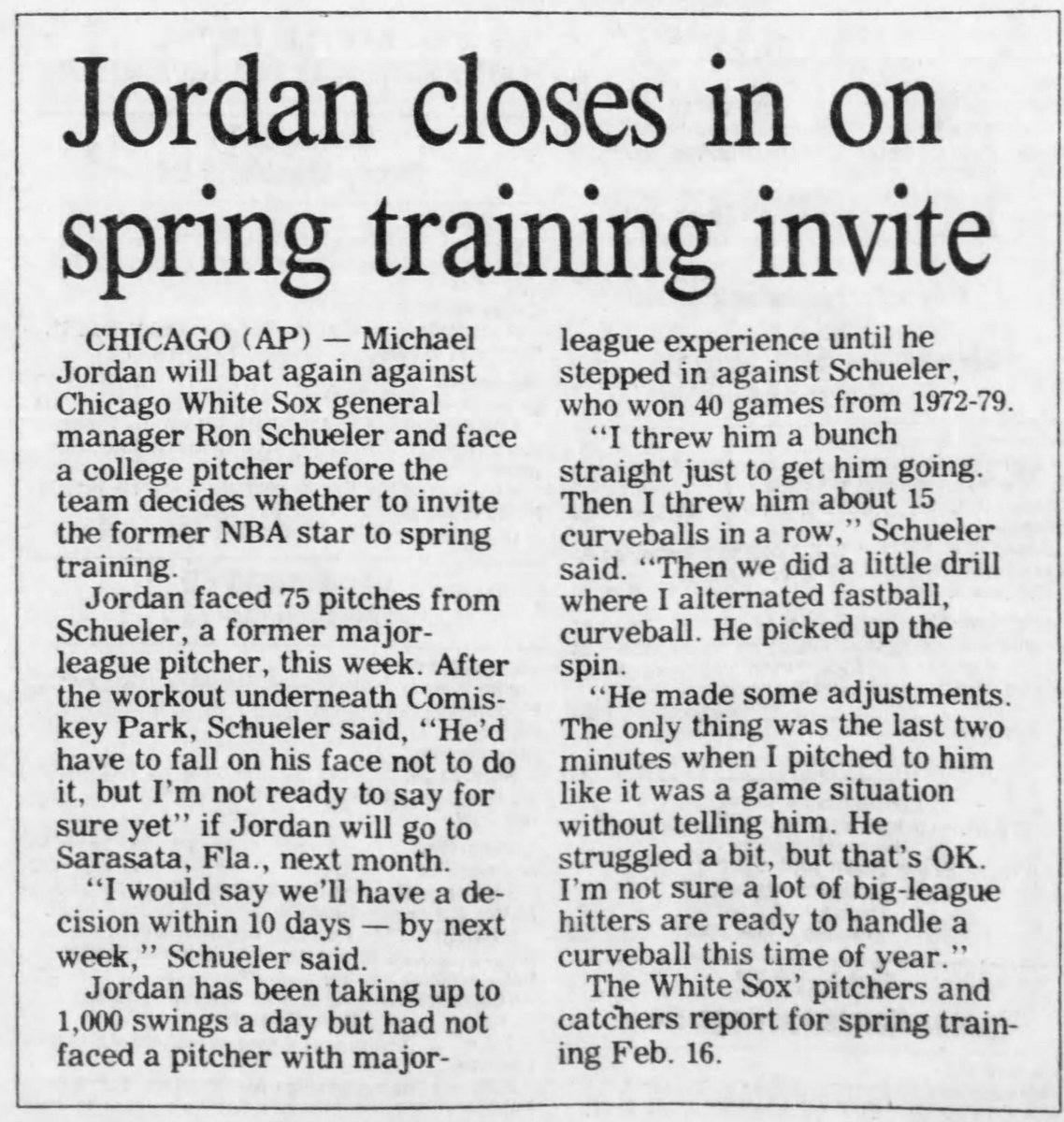
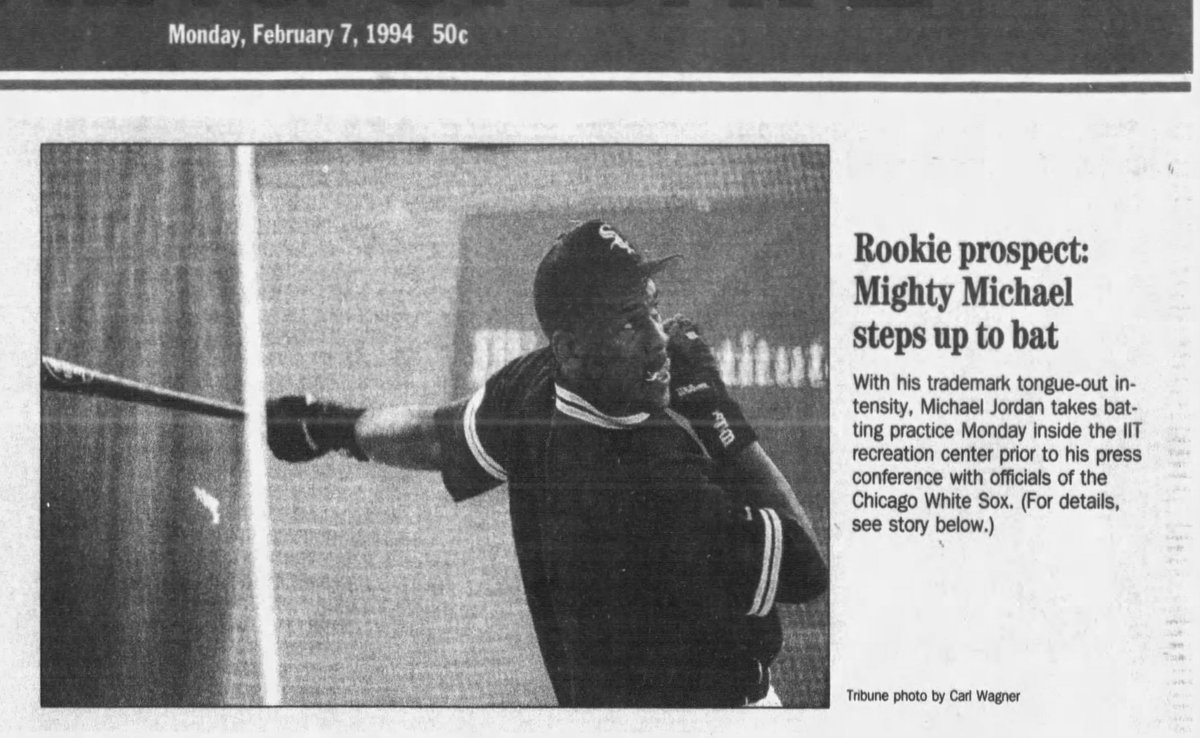
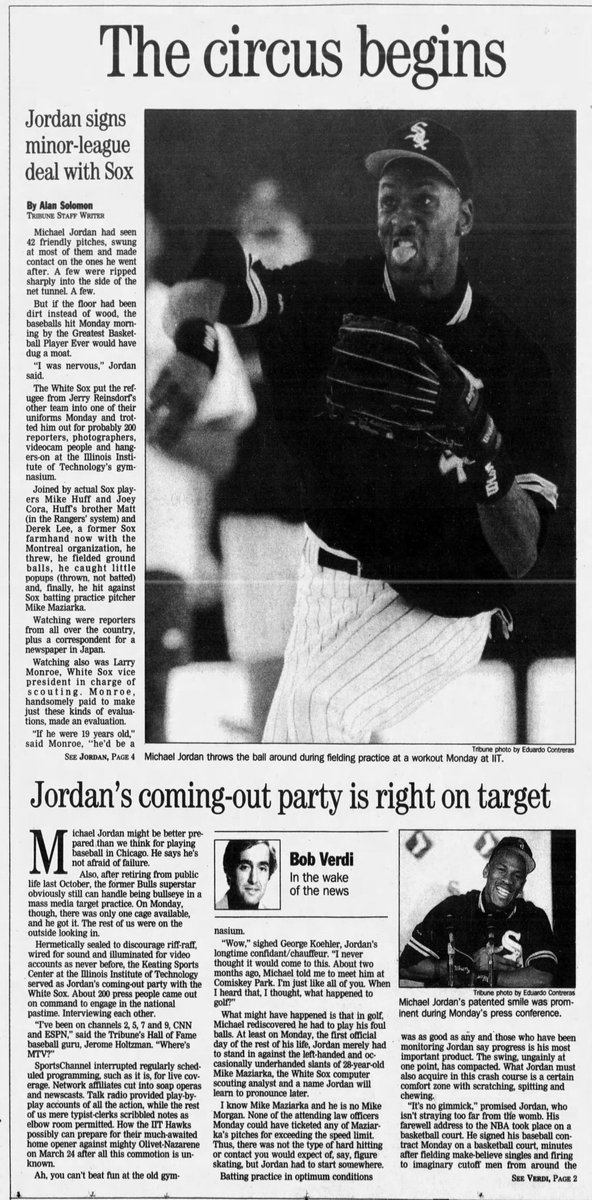
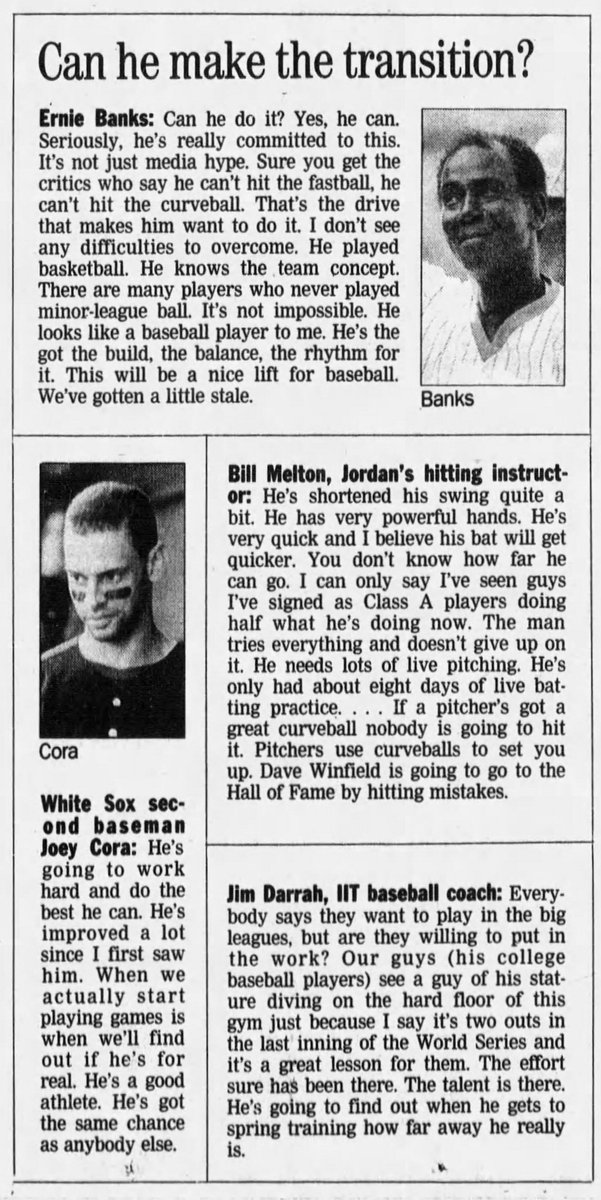
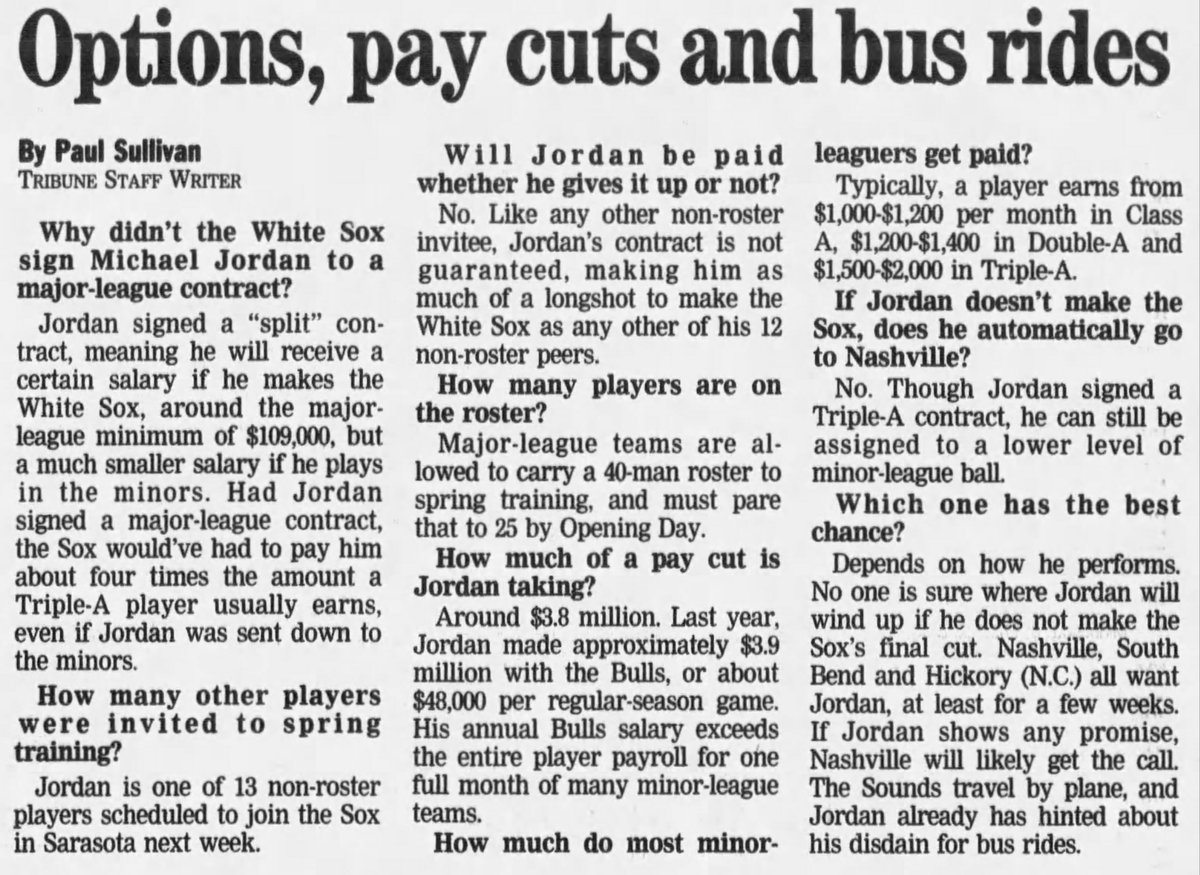
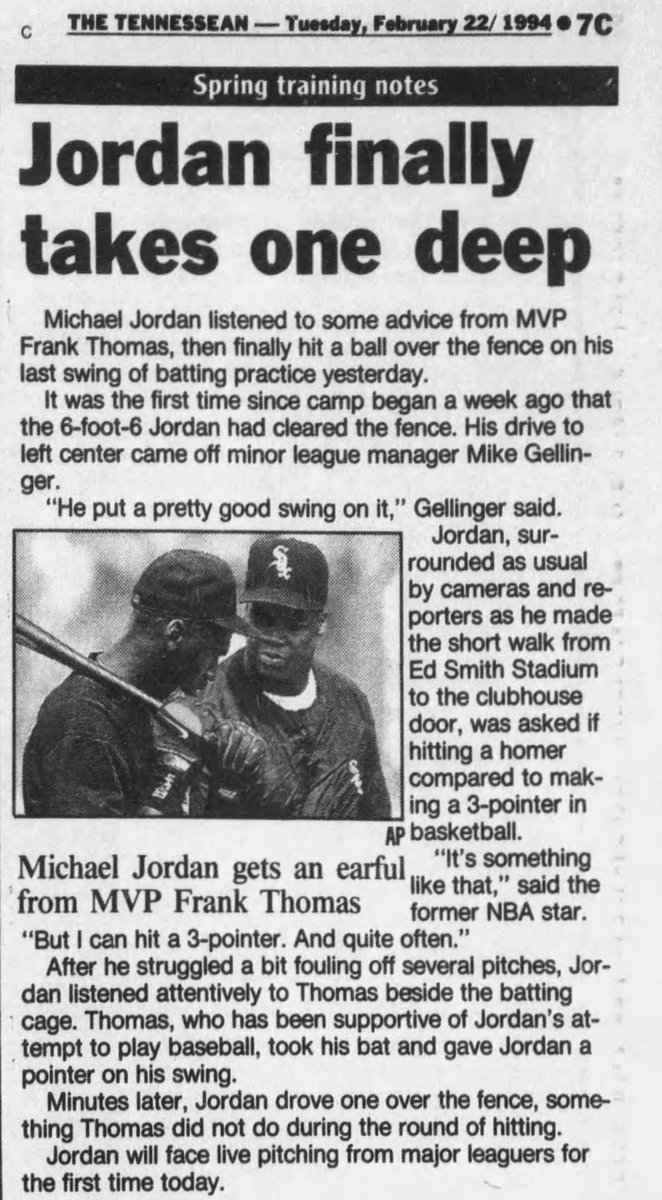

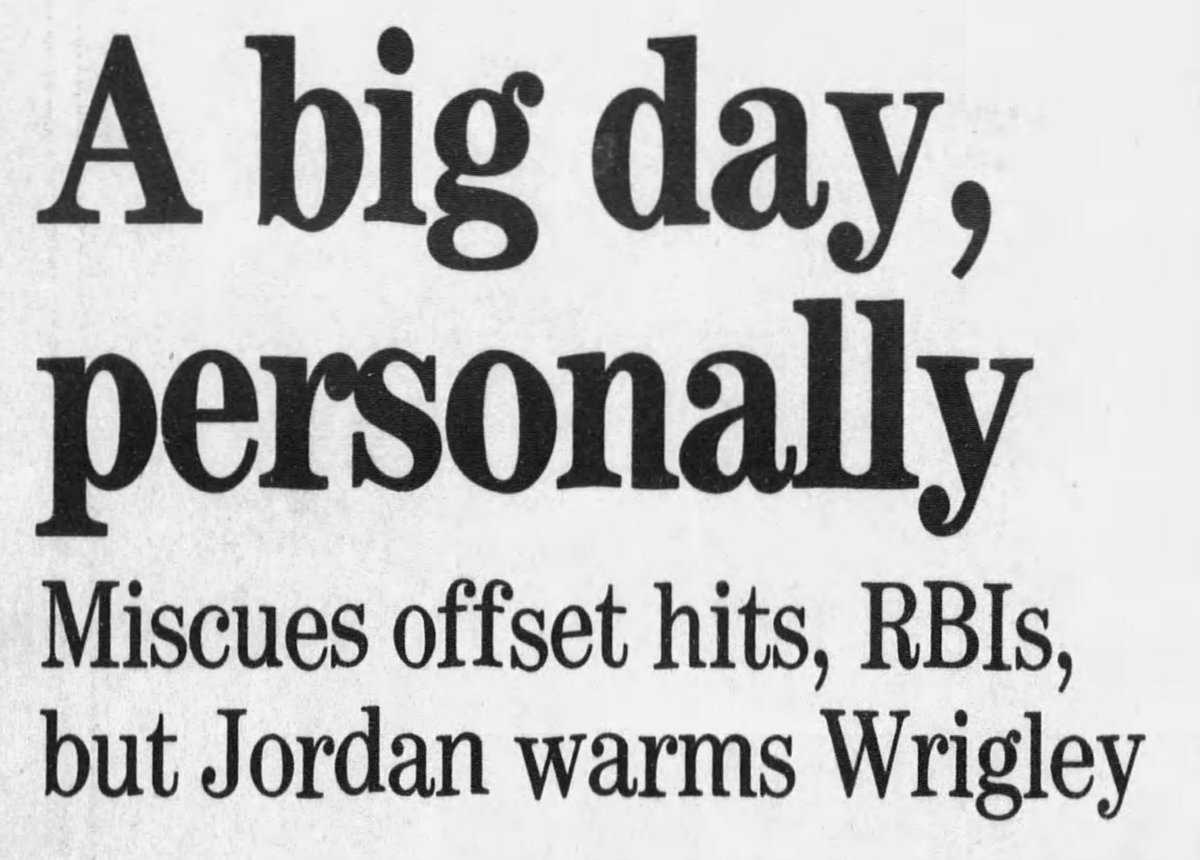

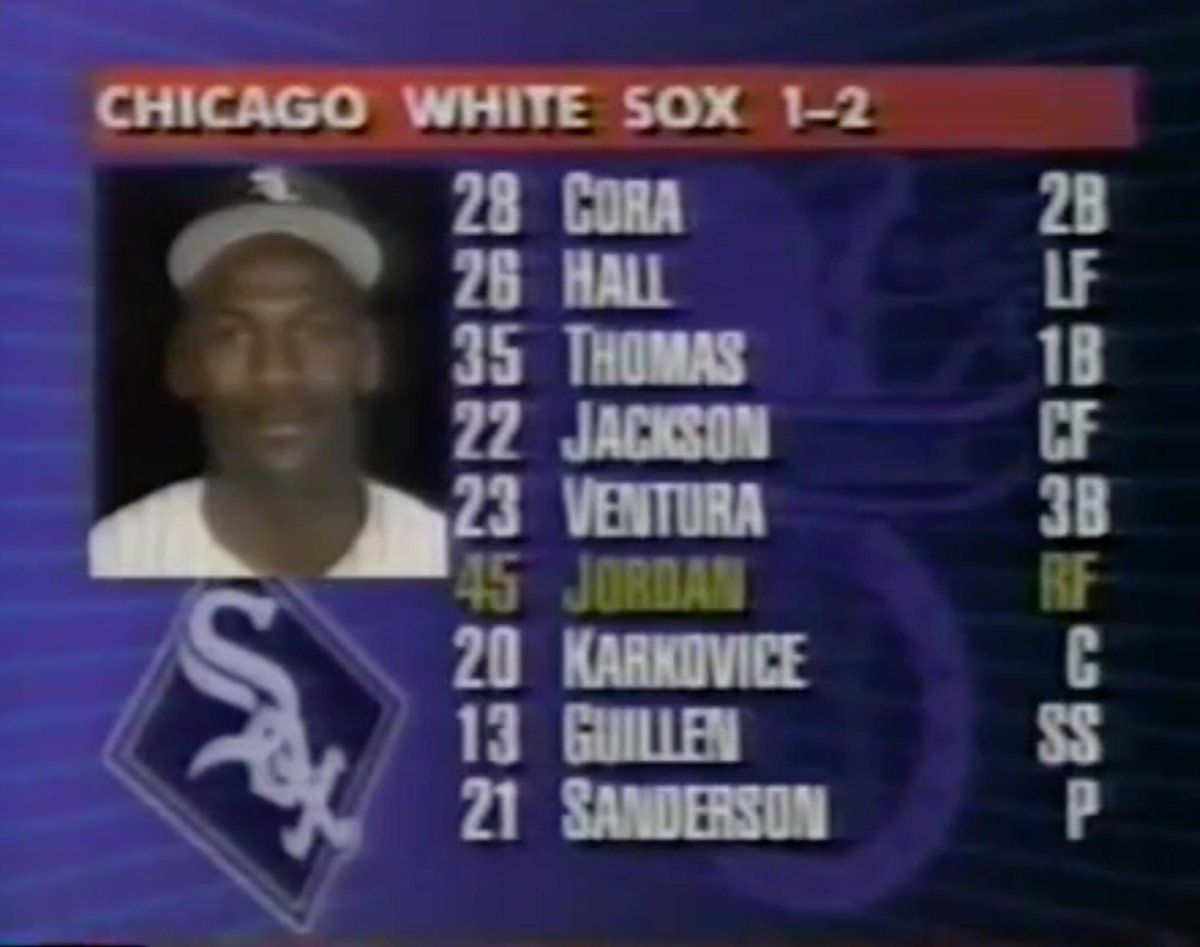
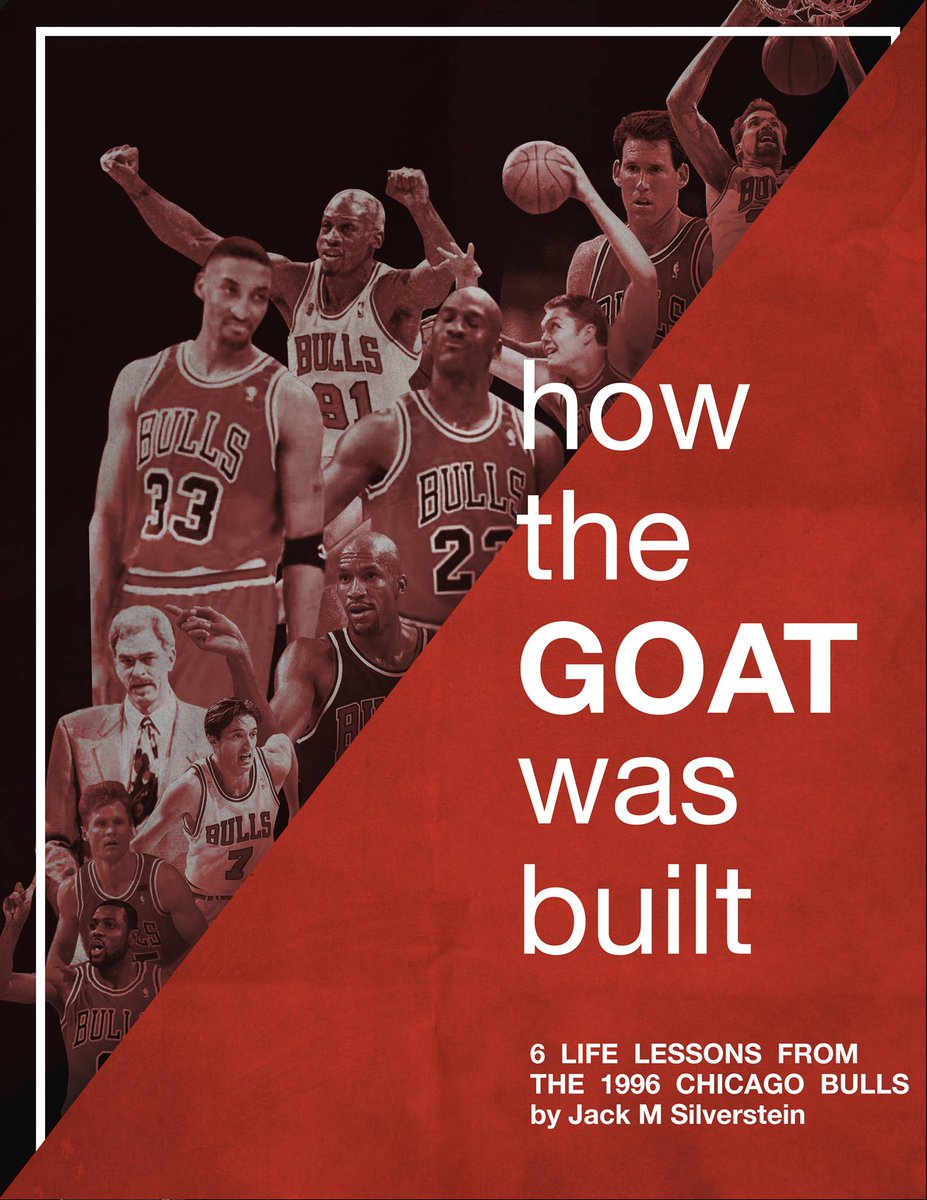
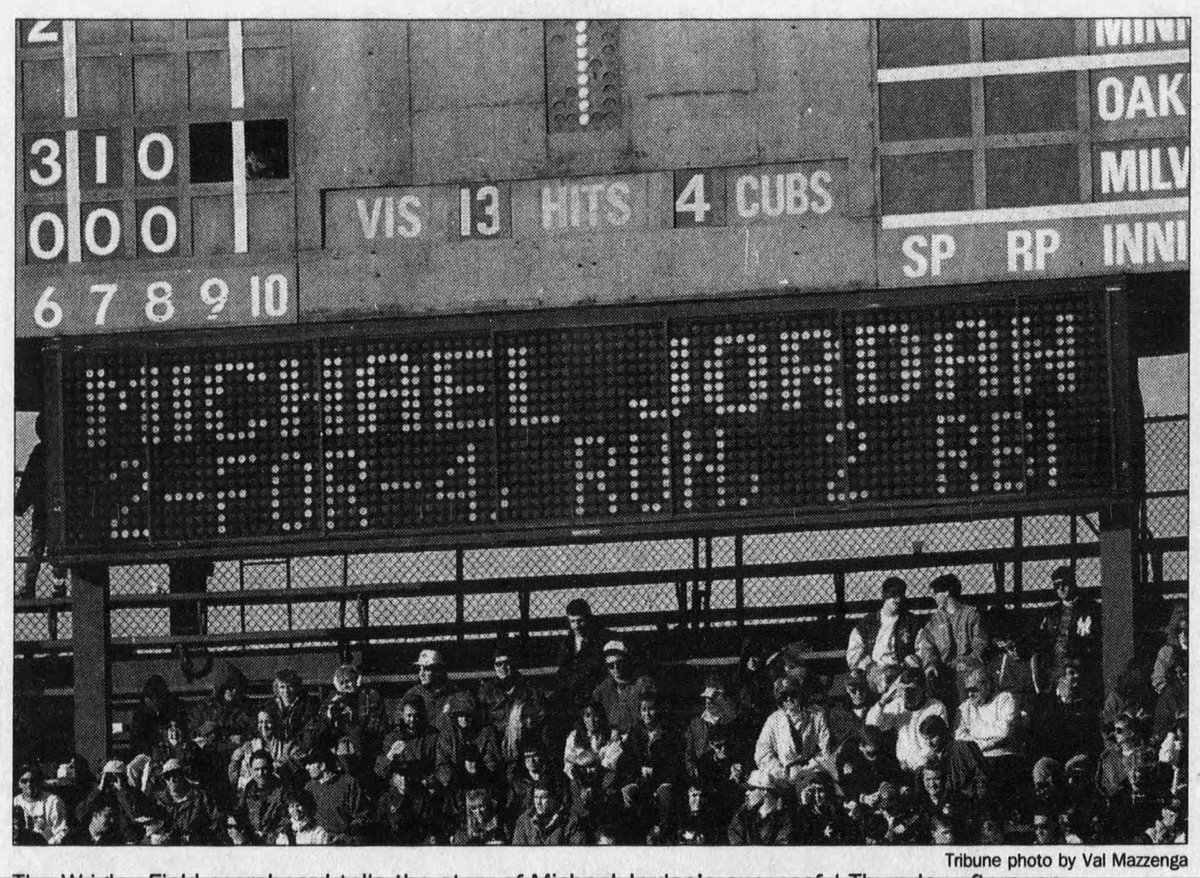
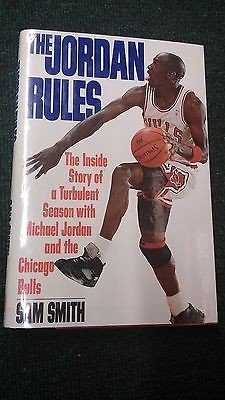
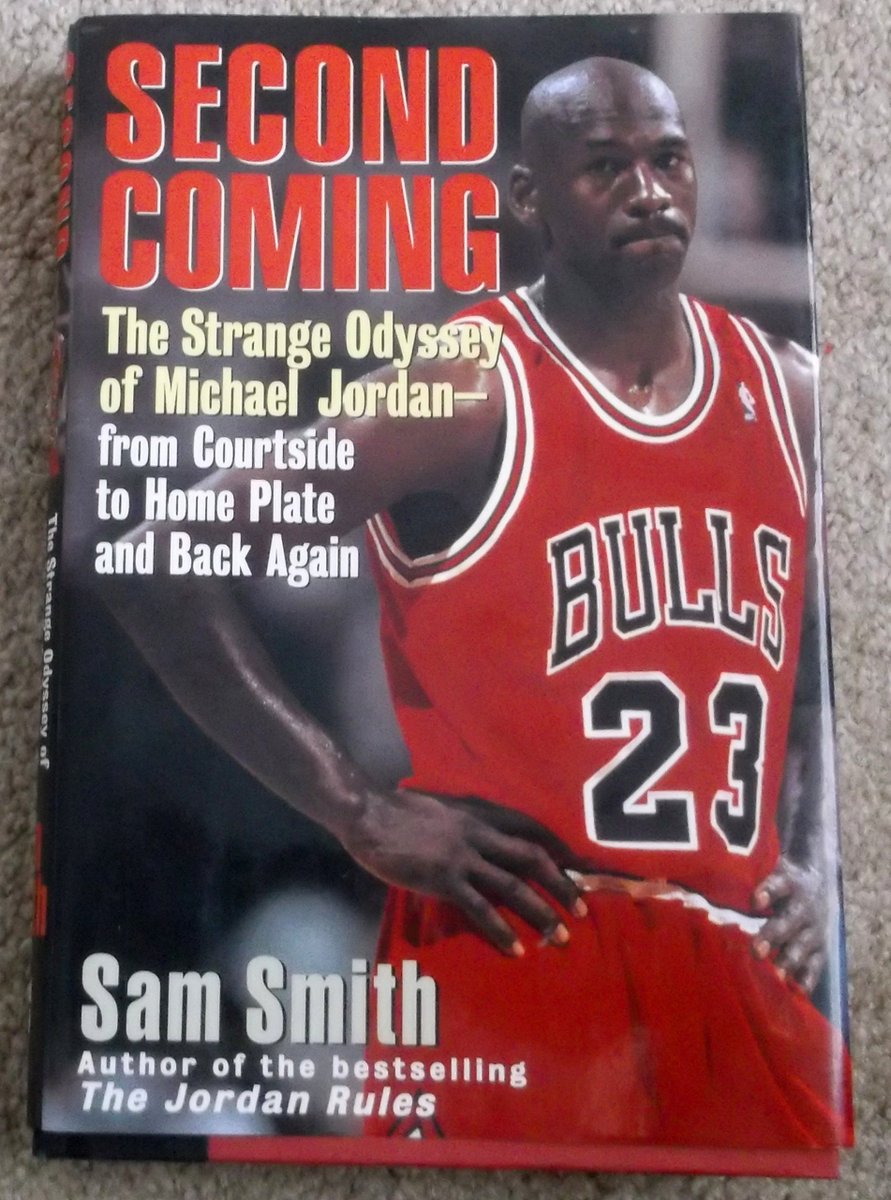
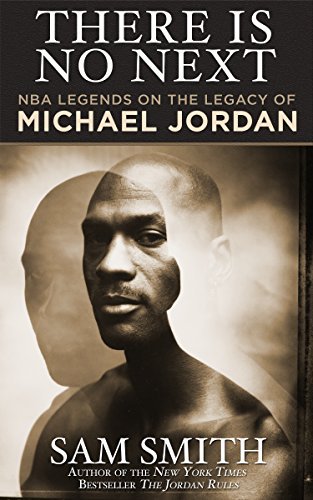
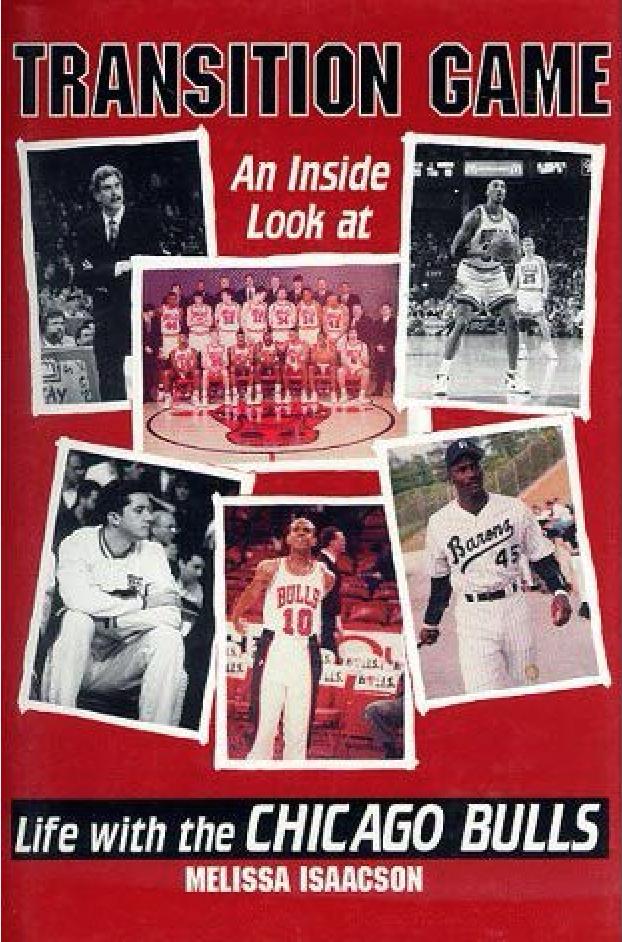
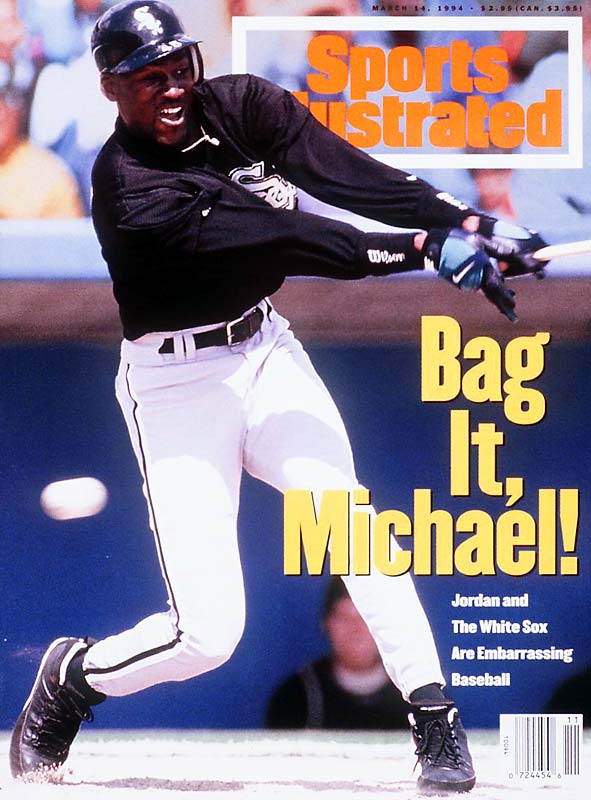
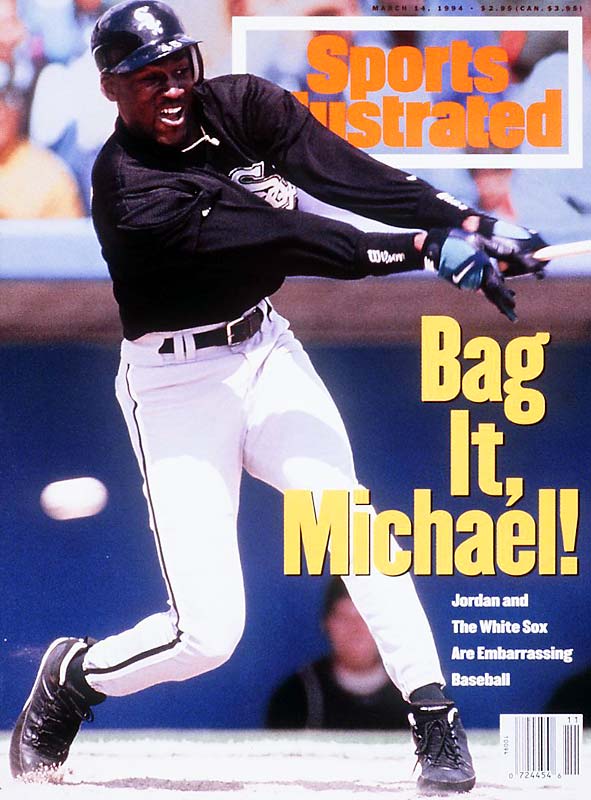

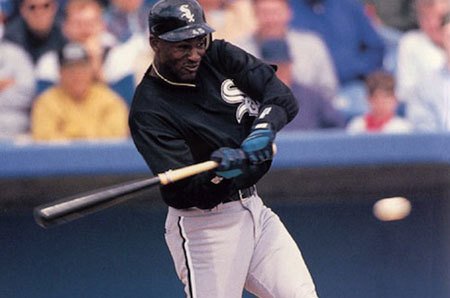
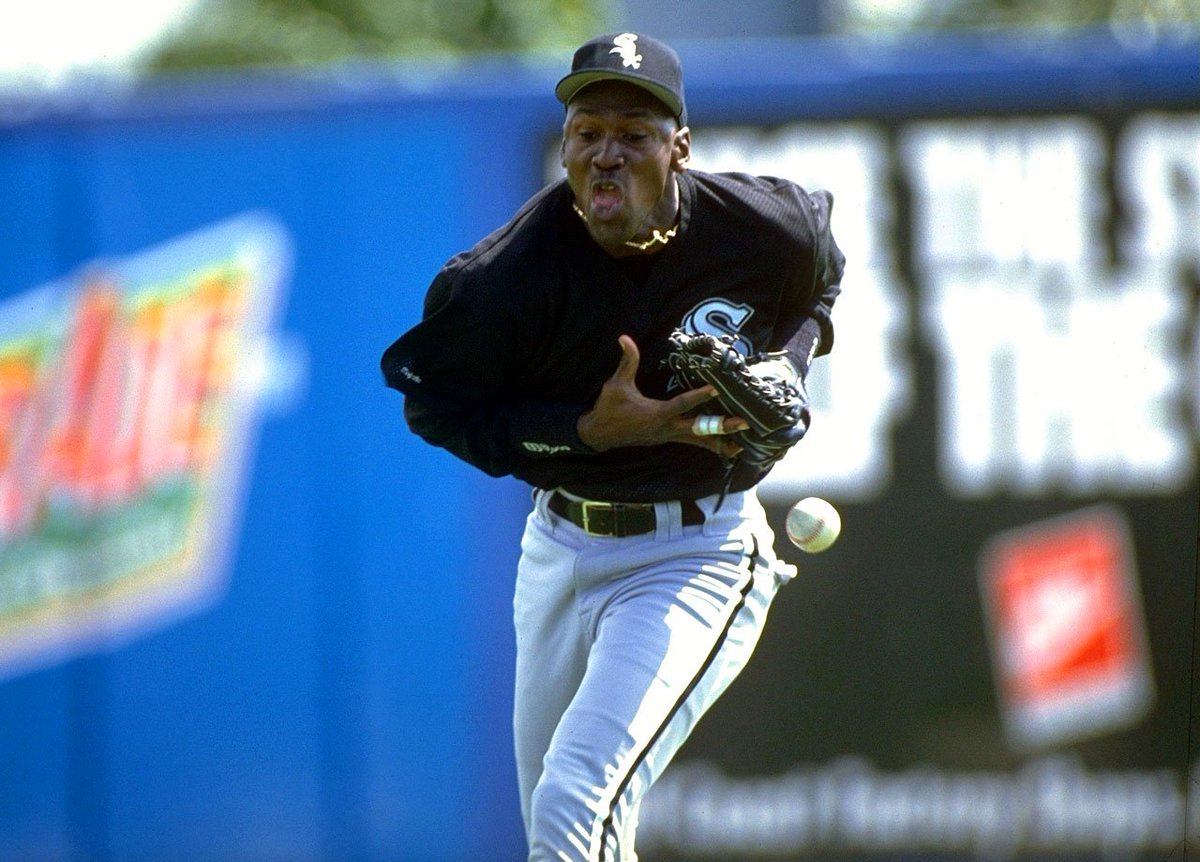
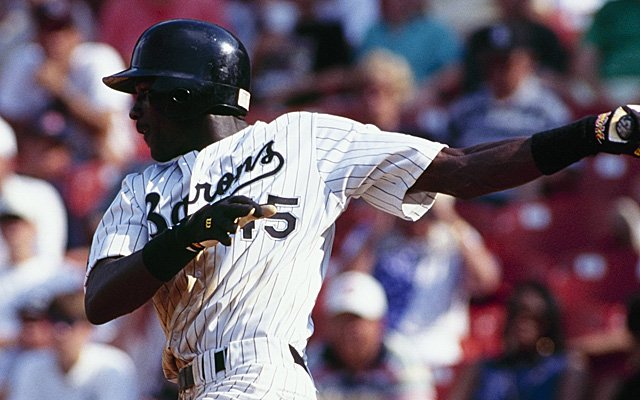
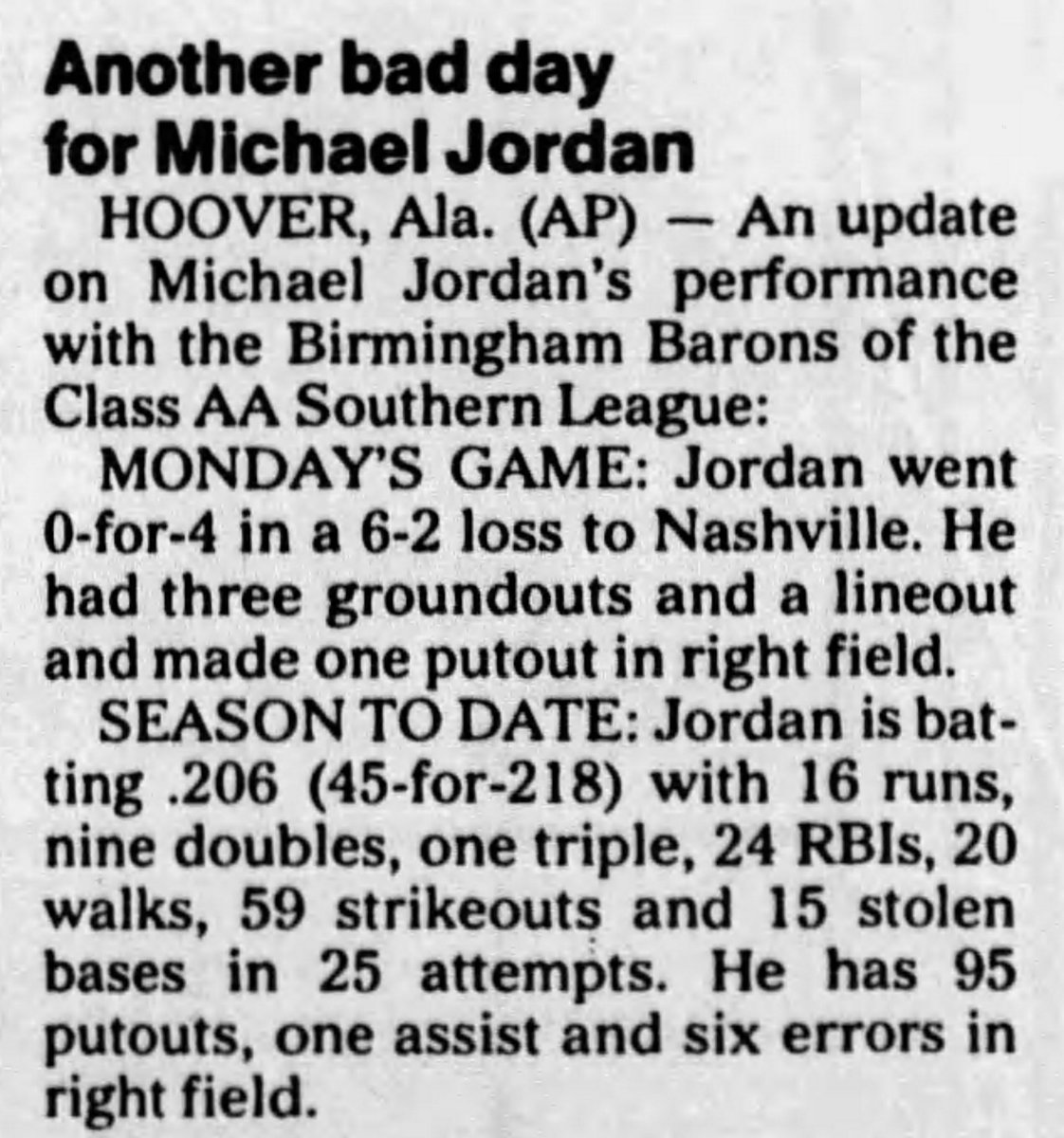
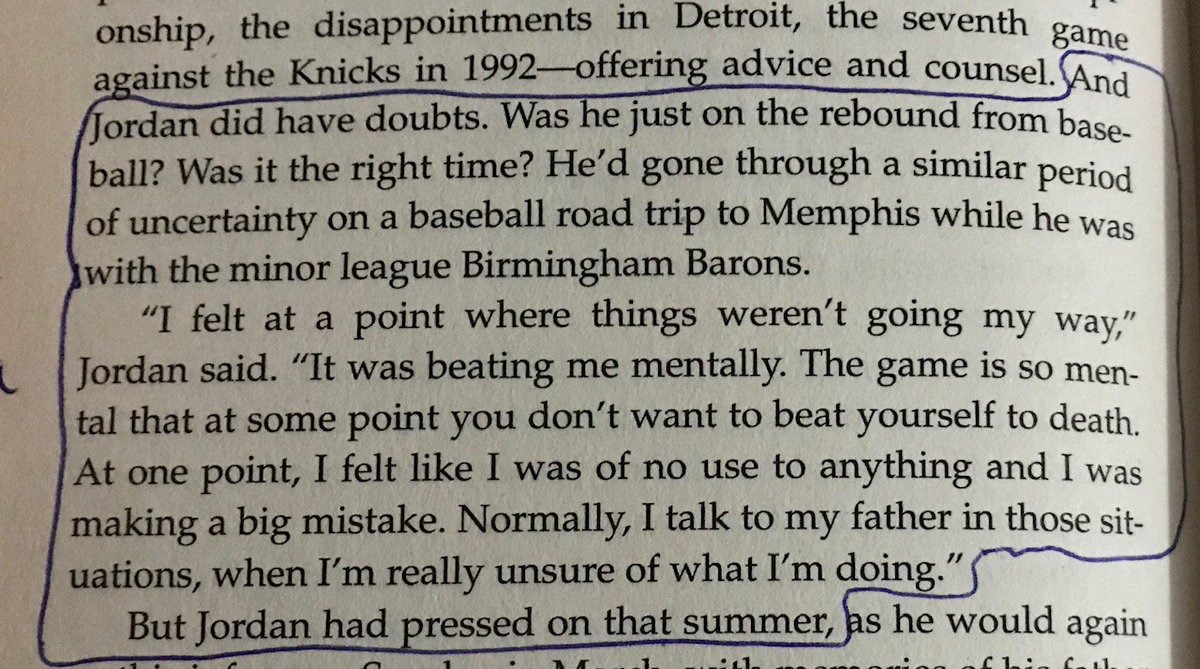

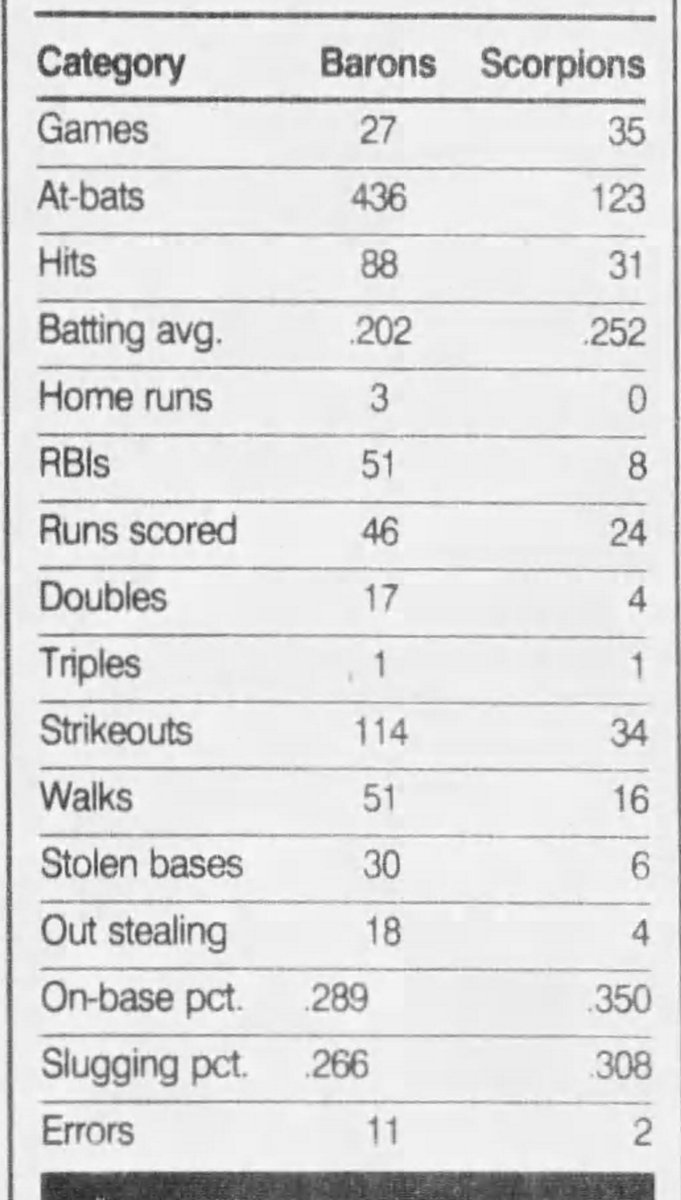
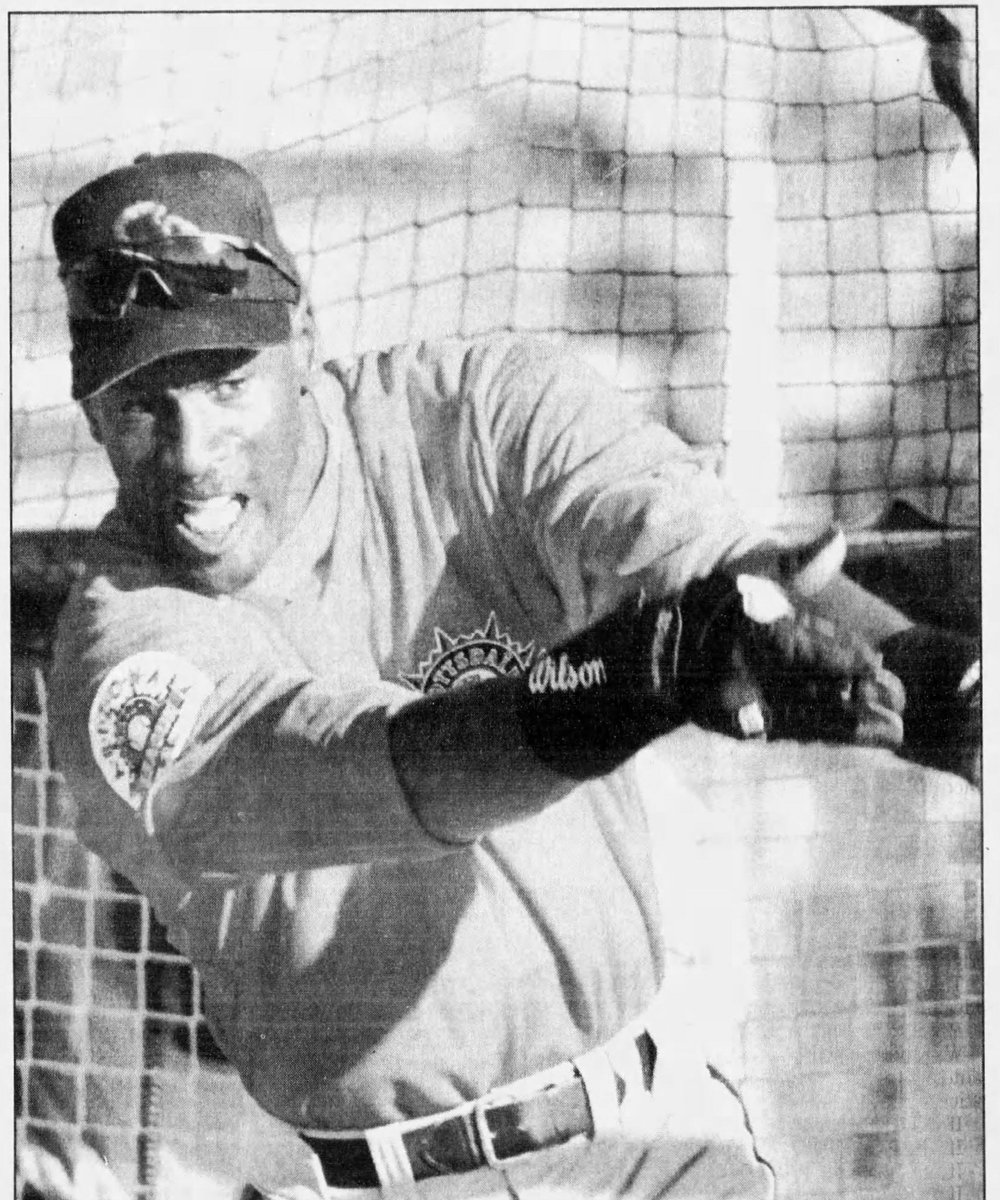
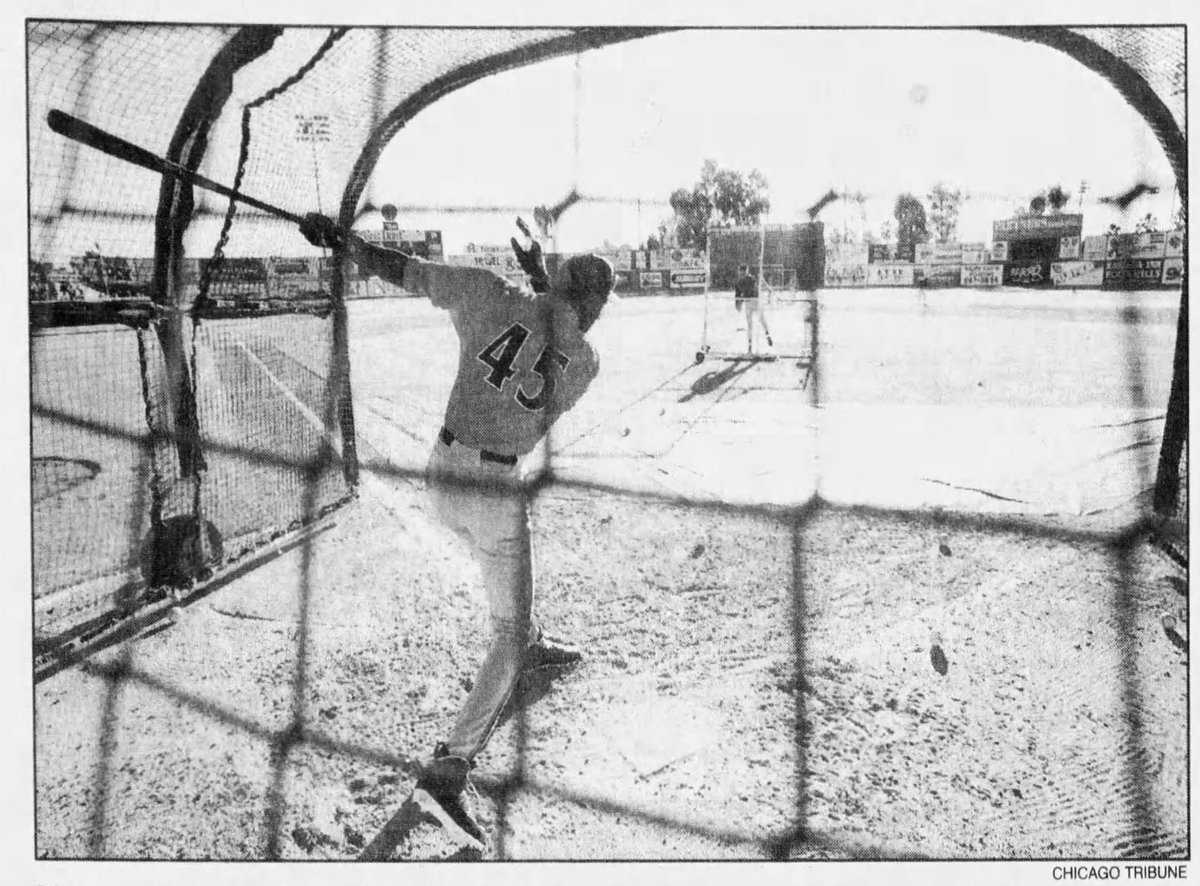
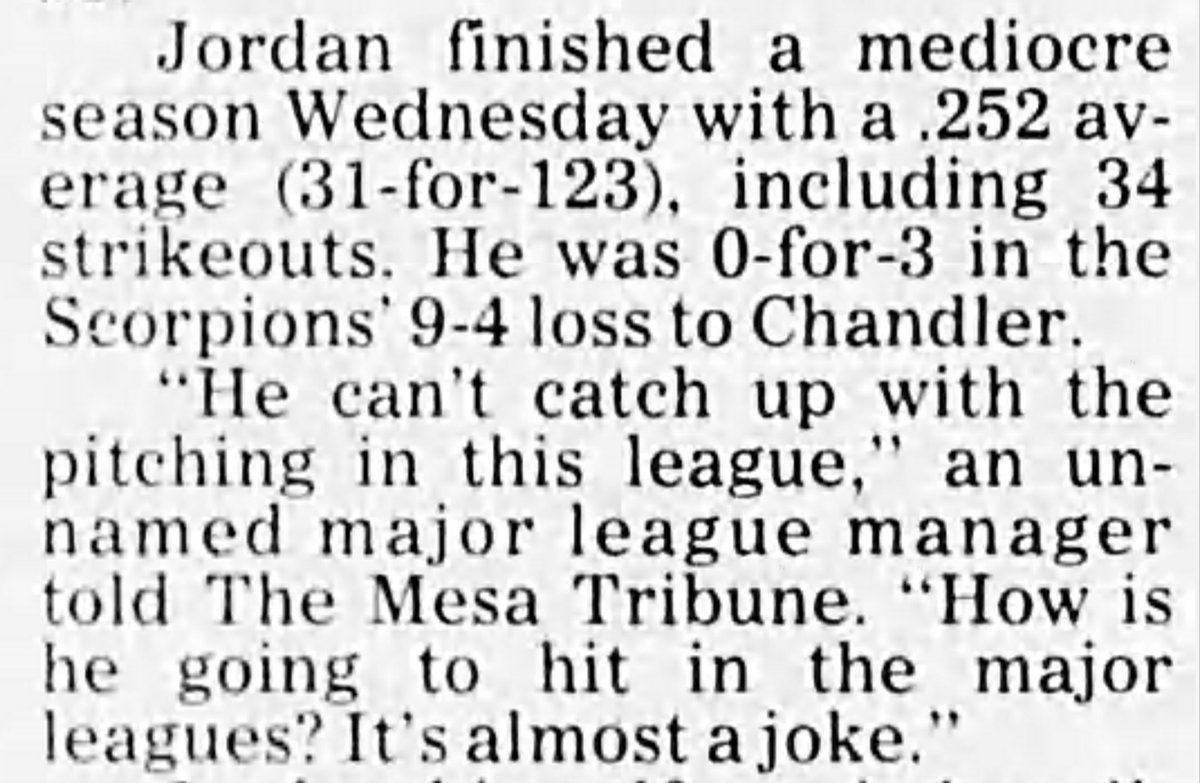
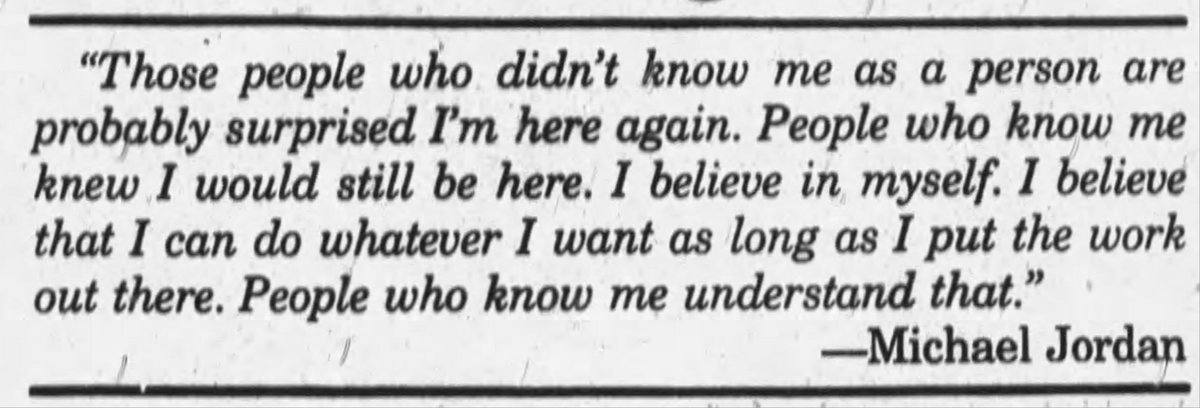
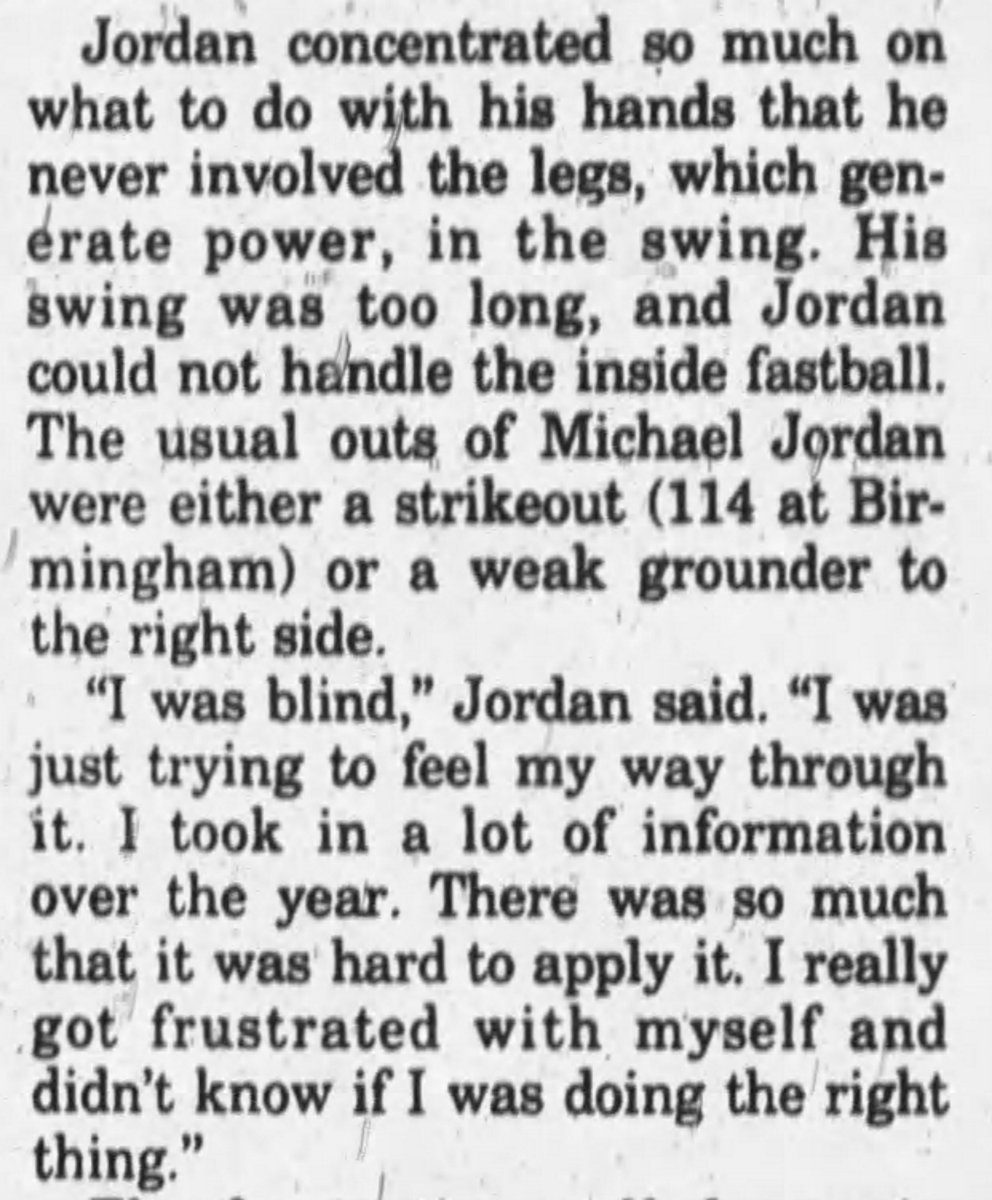
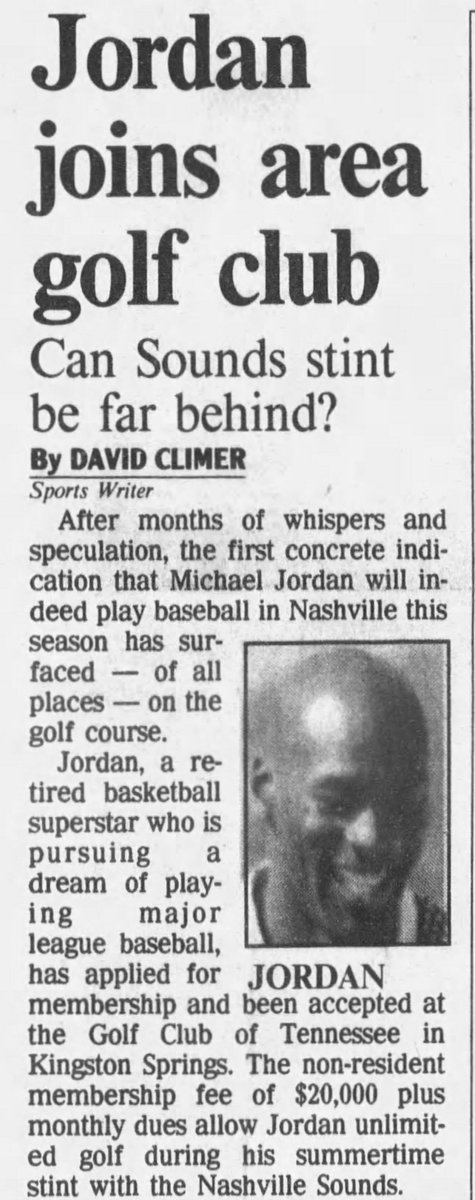

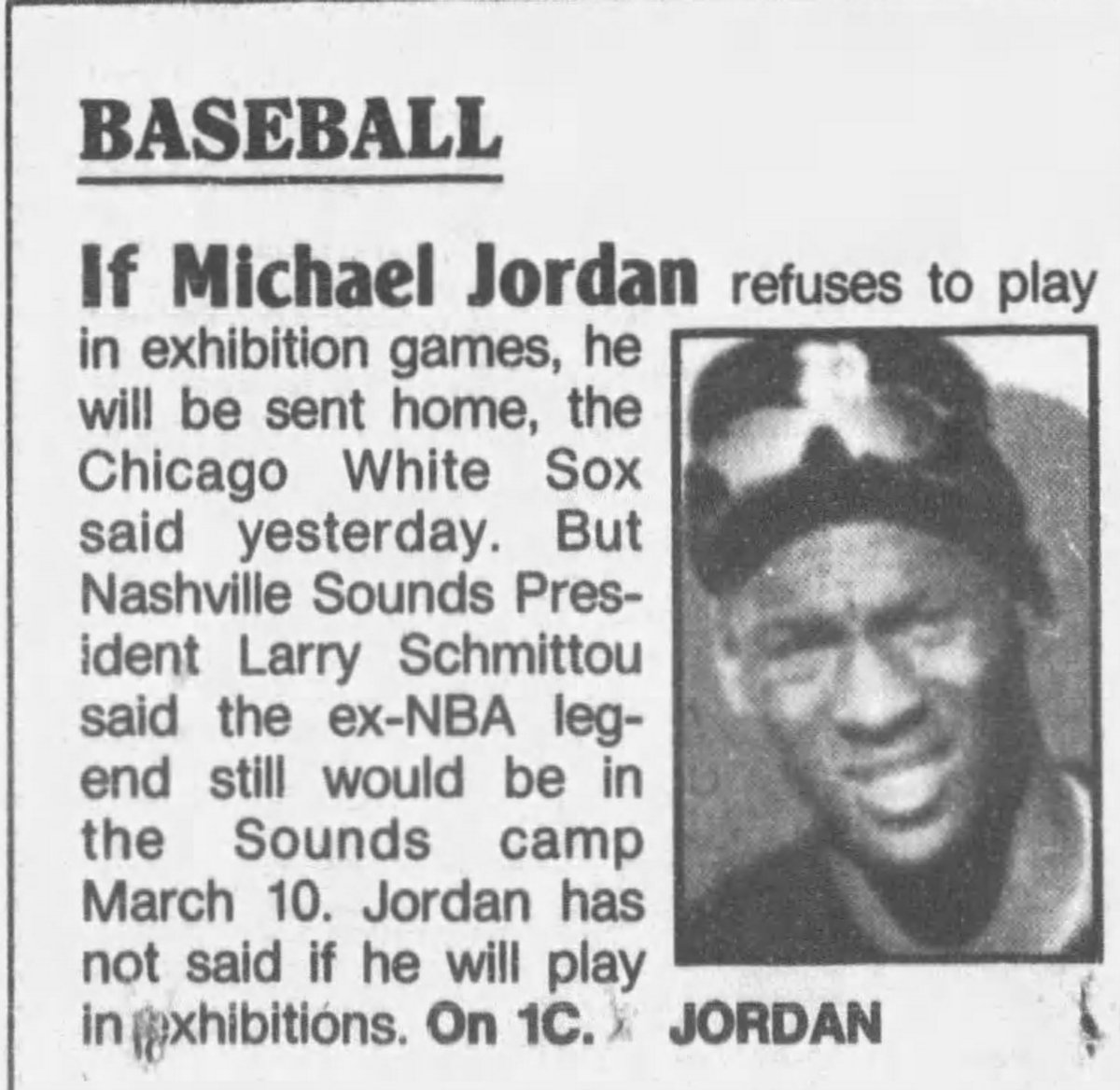
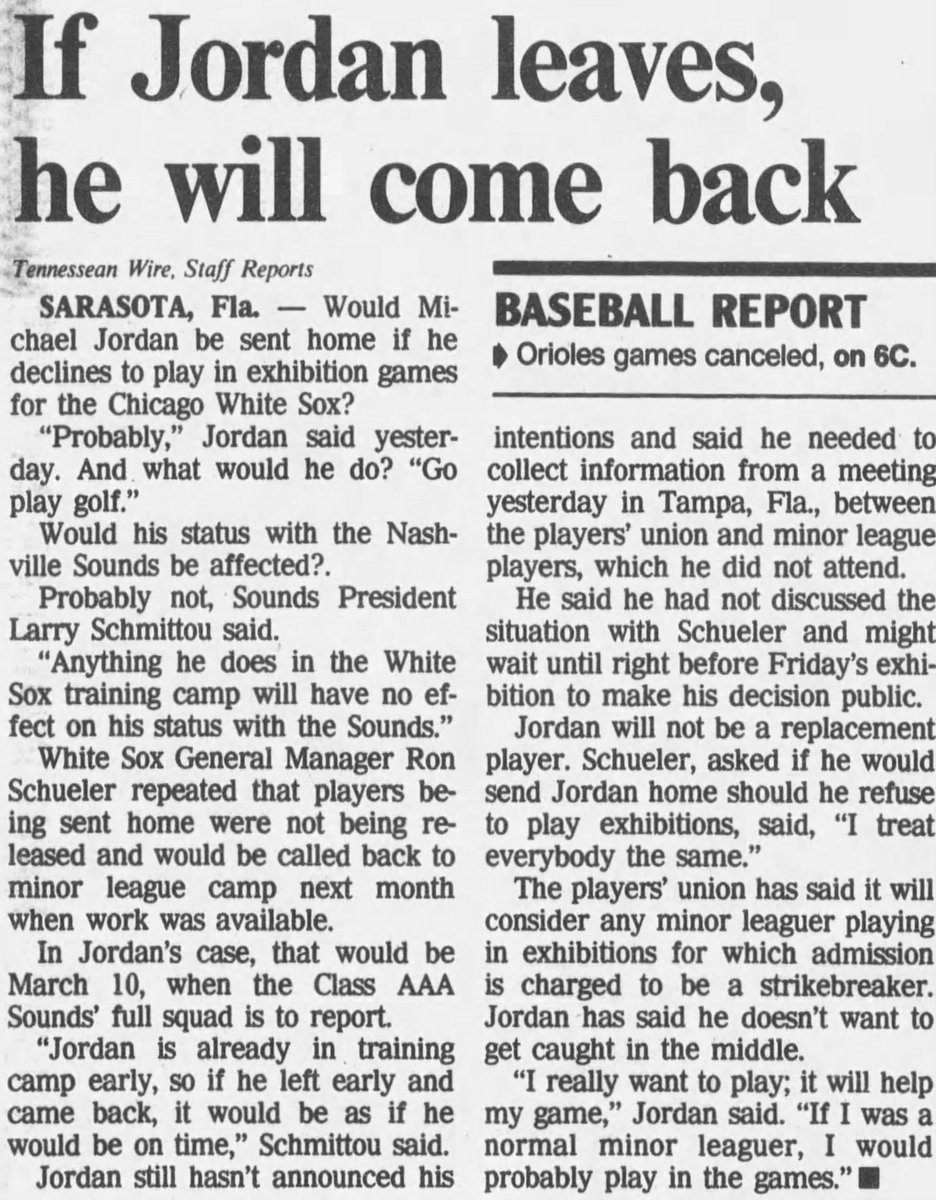

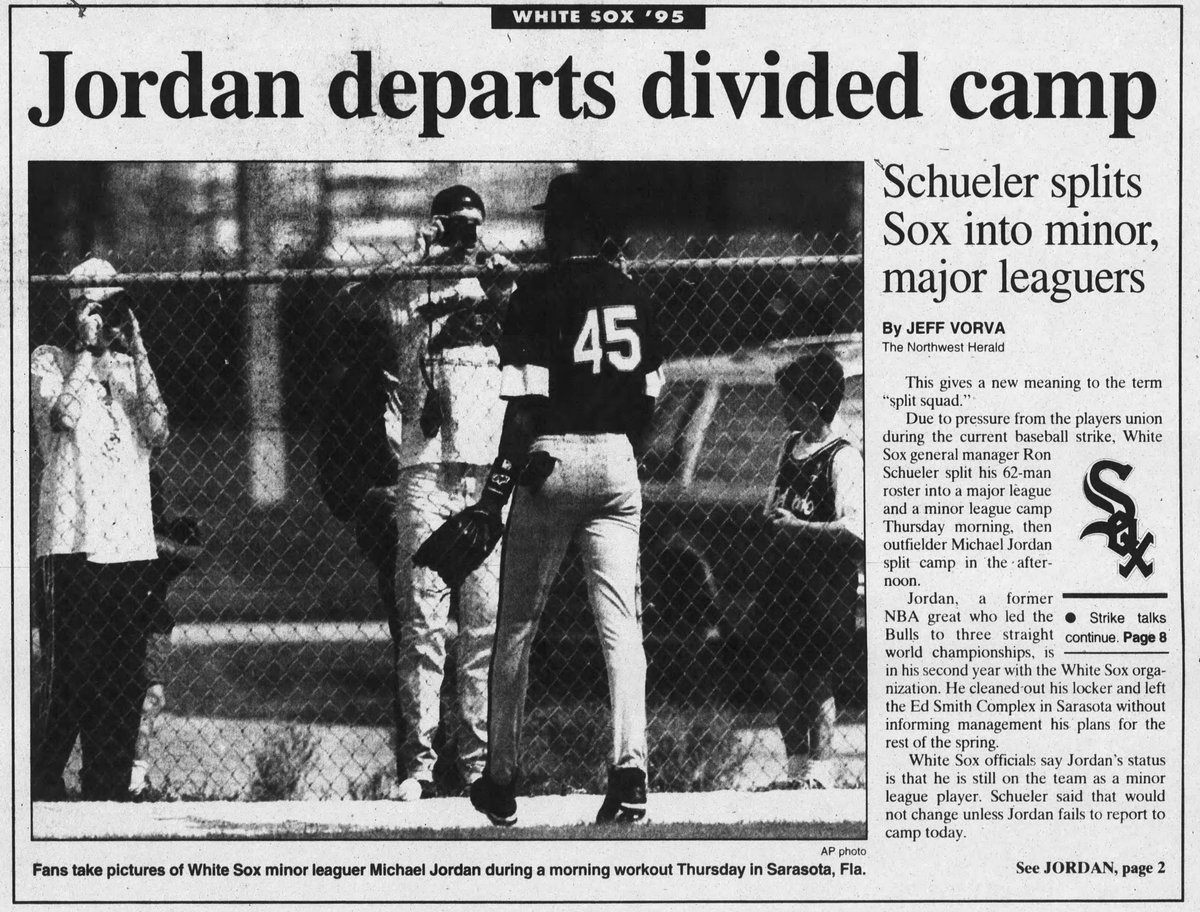
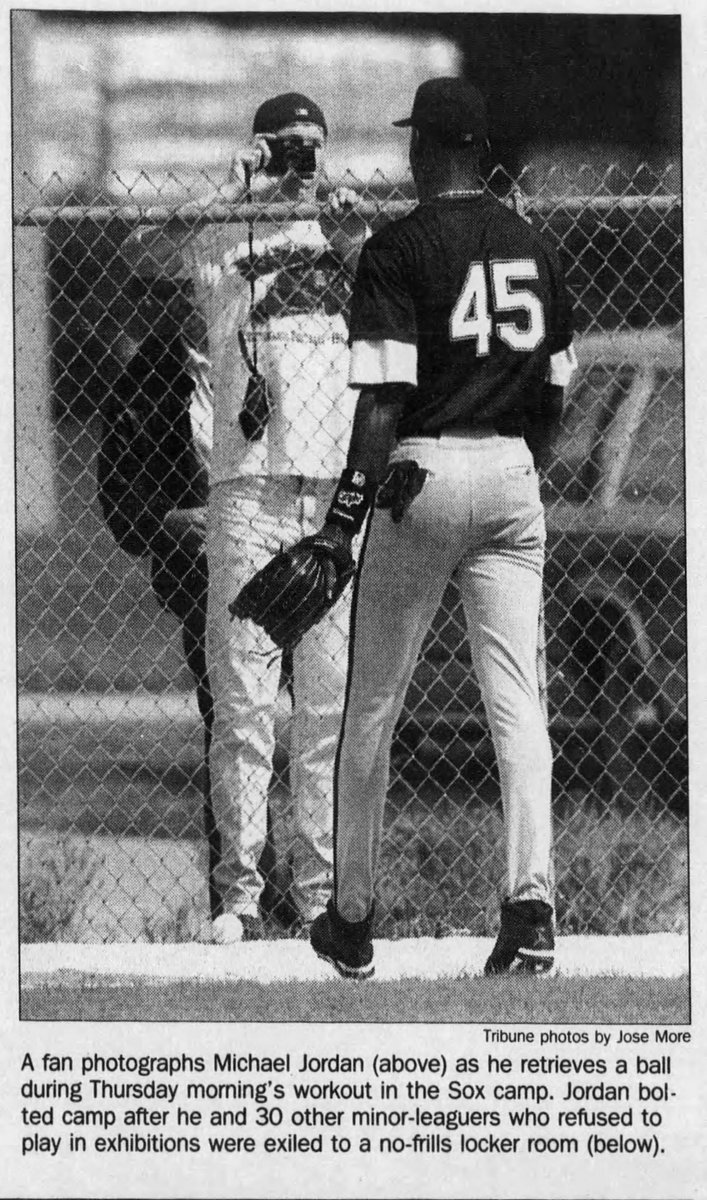

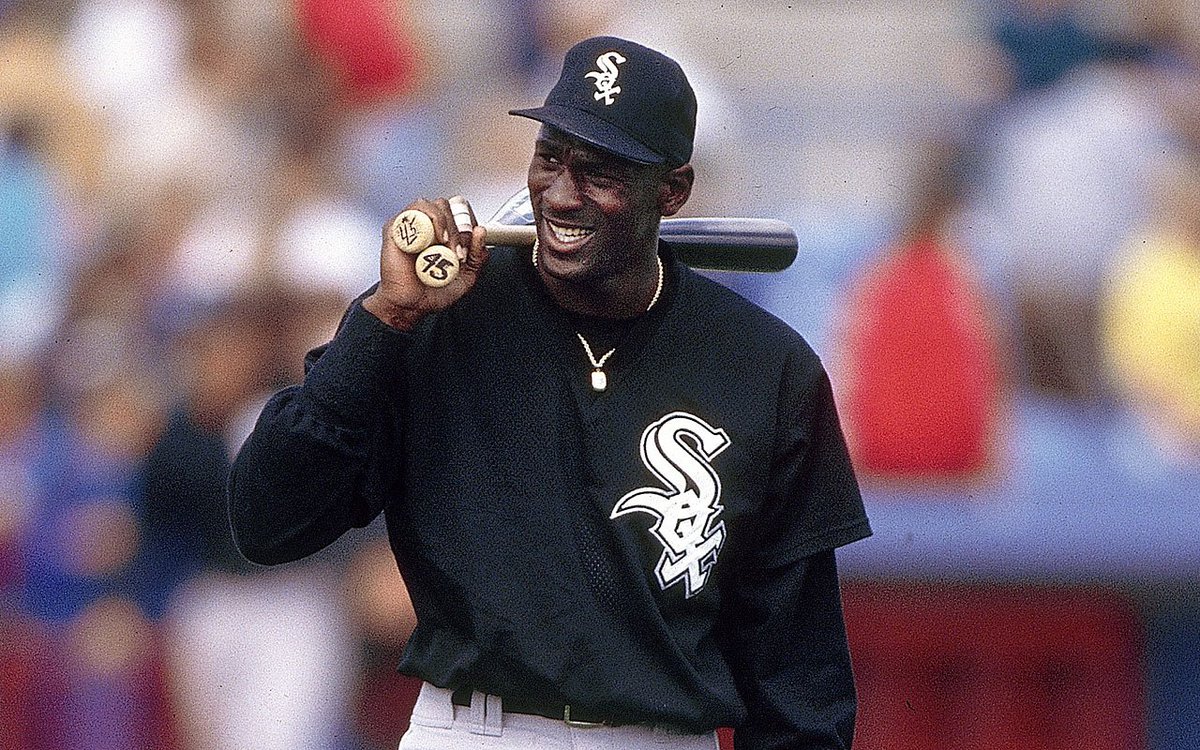
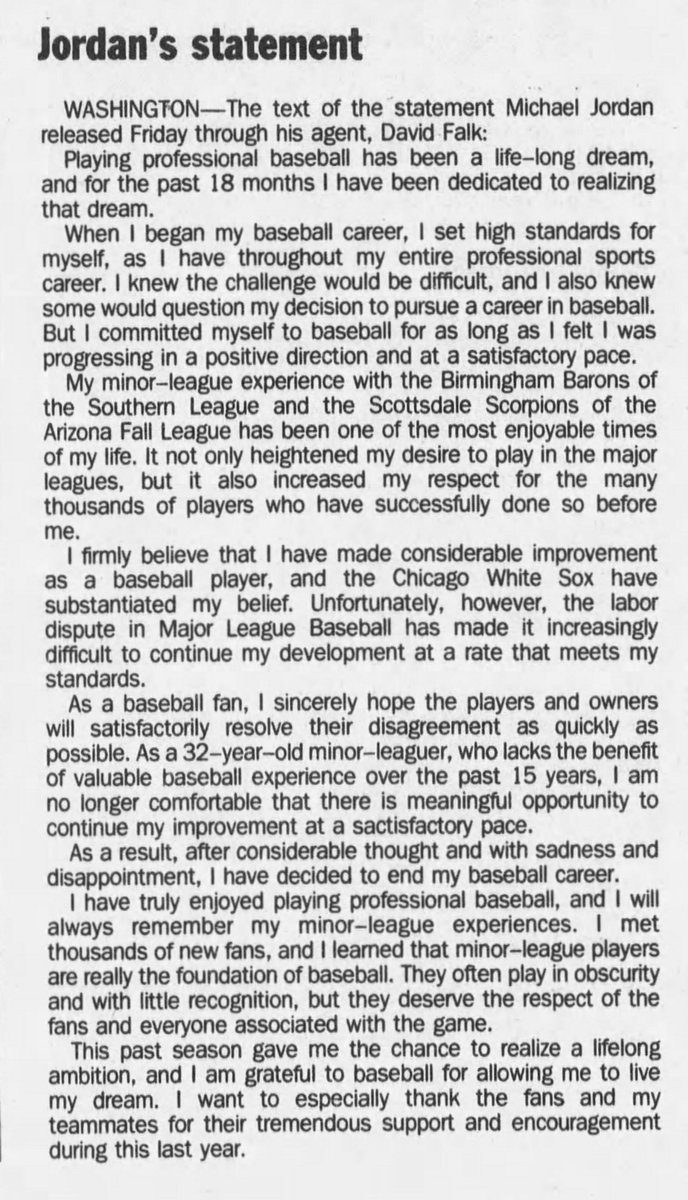 @NBCSChicago @NBCSBulls @mikedyce @thetonygill" title="Left: Michael Jordan announces his retirement from baseball, March 10, 1995 — 379 wordsRight: Michael Jordan announces his return to basketball, March 18, 1995 — 2 words https://nbcsports.com/chicago/b... href="https://twitter.com/NBCSChicago">@NBCSChicago @NBCSBulls @mikedyce @thetonygill">
@NBCSChicago @NBCSBulls @mikedyce @thetonygill" title="Left: Michael Jordan announces his retirement from baseball, March 10, 1995 — 379 wordsRight: Michael Jordan announces his return to basketball, March 18, 1995 — 2 words https://nbcsports.com/chicago/b... href="https://twitter.com/NBCSChicago">@NBCSChicago @NBCSBulls @mikedyce @thetonygill">
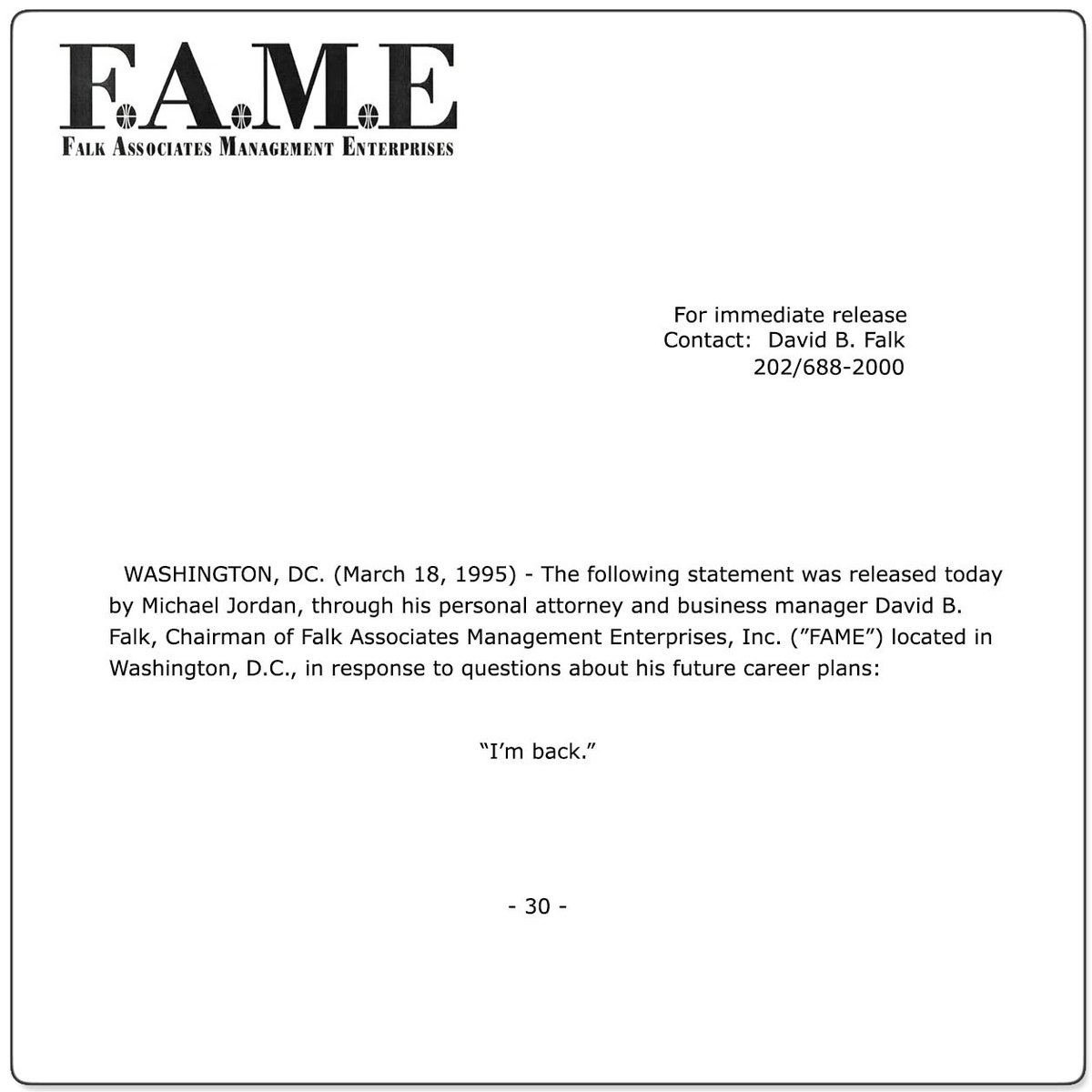 @NBCSChicago @NBCSBulls @mikedyce @thetonygill" title="Left: Michael Jordan announces his retirement from baseball, March 10, 1995 — 379 wordsRight: Michael Jordan announces his return to basketball, March 18, 1995 — 2 words https://nbcsports.com/chicago/b... href="https://twitter.com/NBCSChicago">@NBCSChicago @NBCSBulls @mikedyce @thetonygill">
@NBCSChicago @NBCSBulls @mikedyce @thetonygill" title="Left: Michael Jordan announces his retirement from baseball, March 10, 1995 — 379 wordsRight: Michael Jordan announces his return to basketball, March 18, 1995 — 2 words https://nbcsports.com/chicago/b... href="https://twitter.com/NBCSChicago">@NBCSChicago @NBCSBulls @mikedyce @thetonygill">
